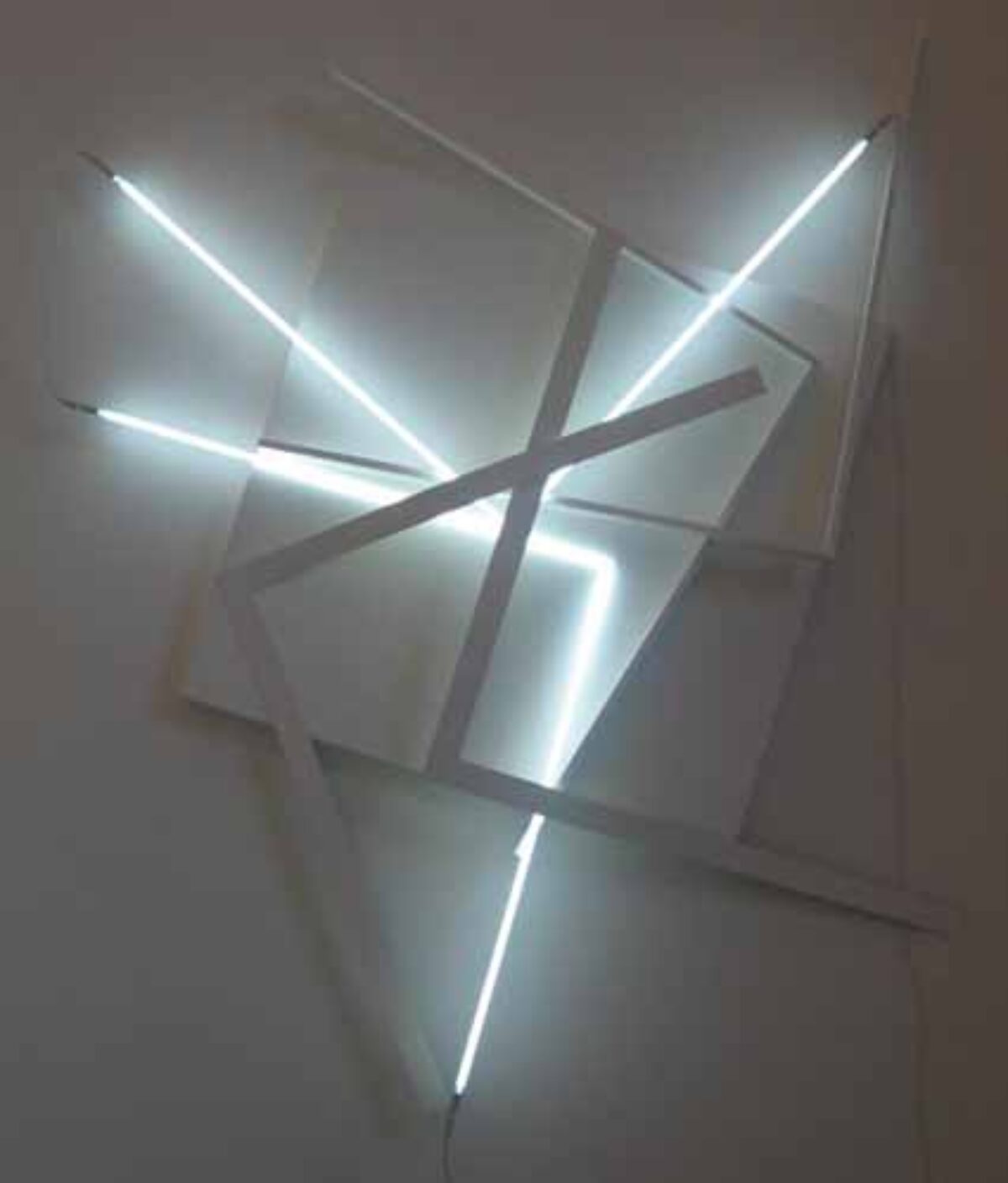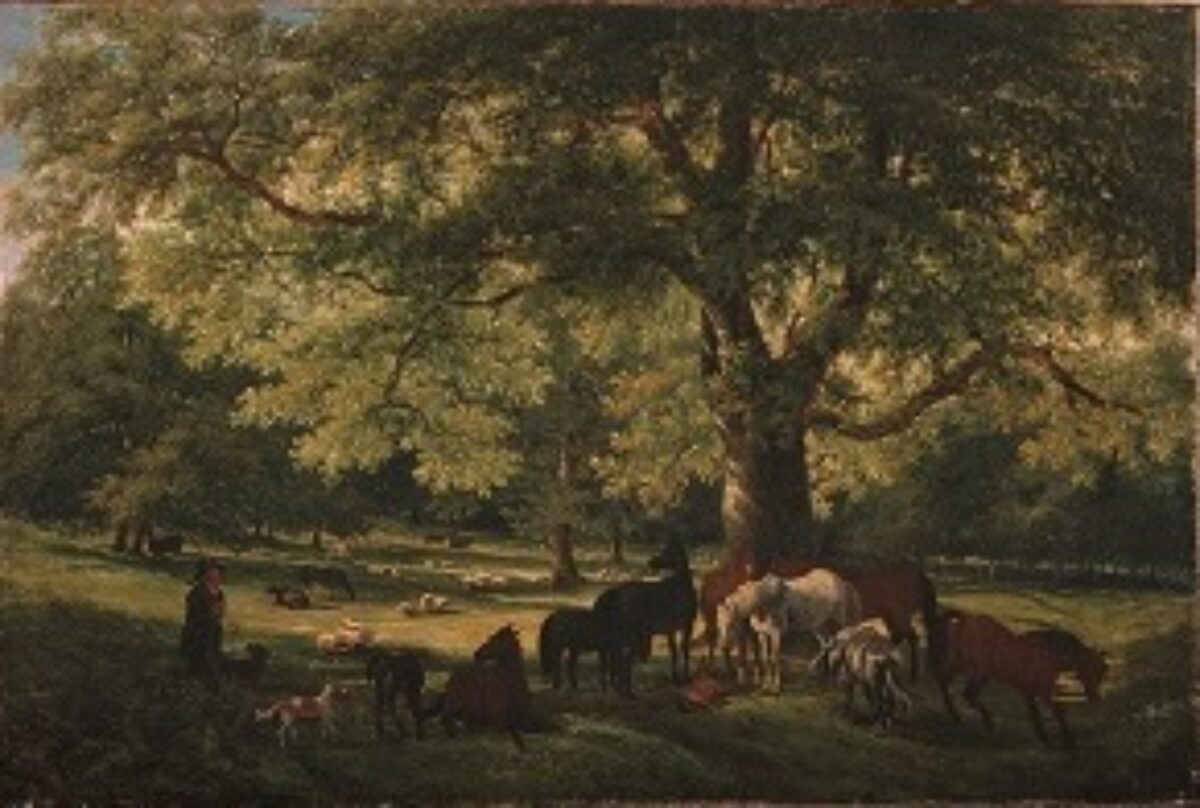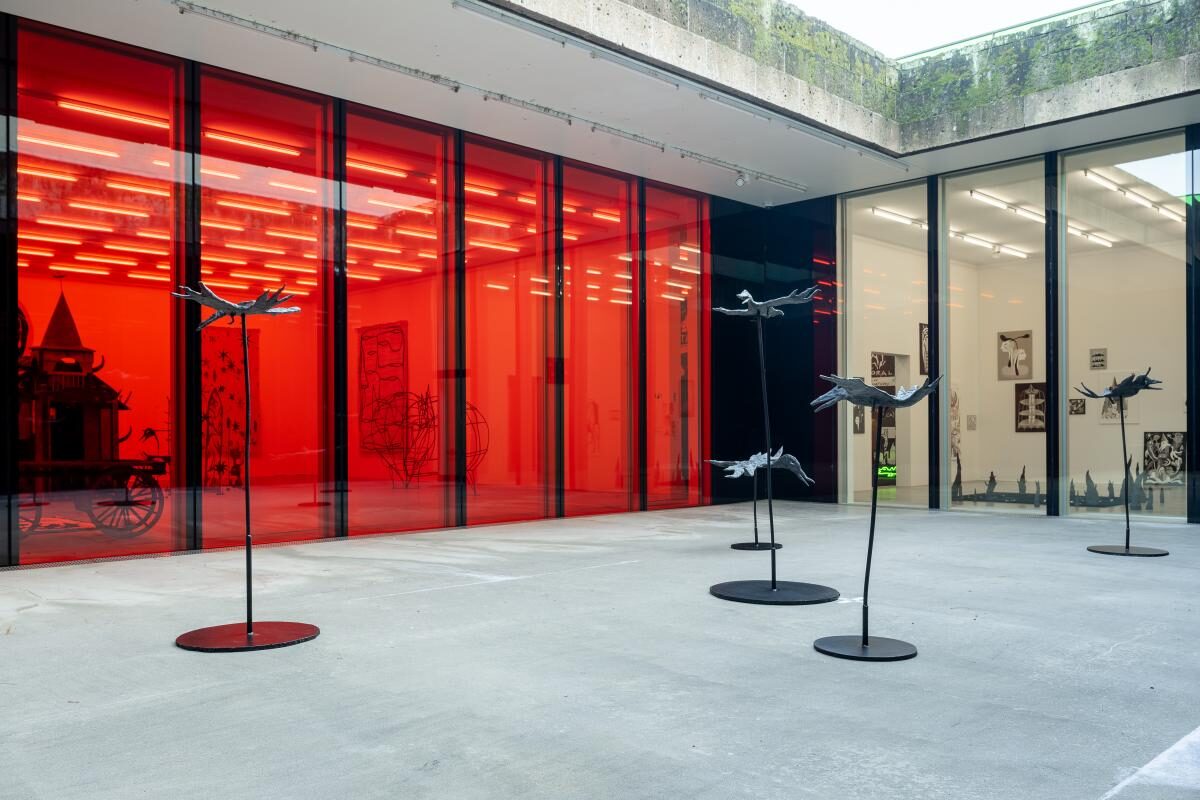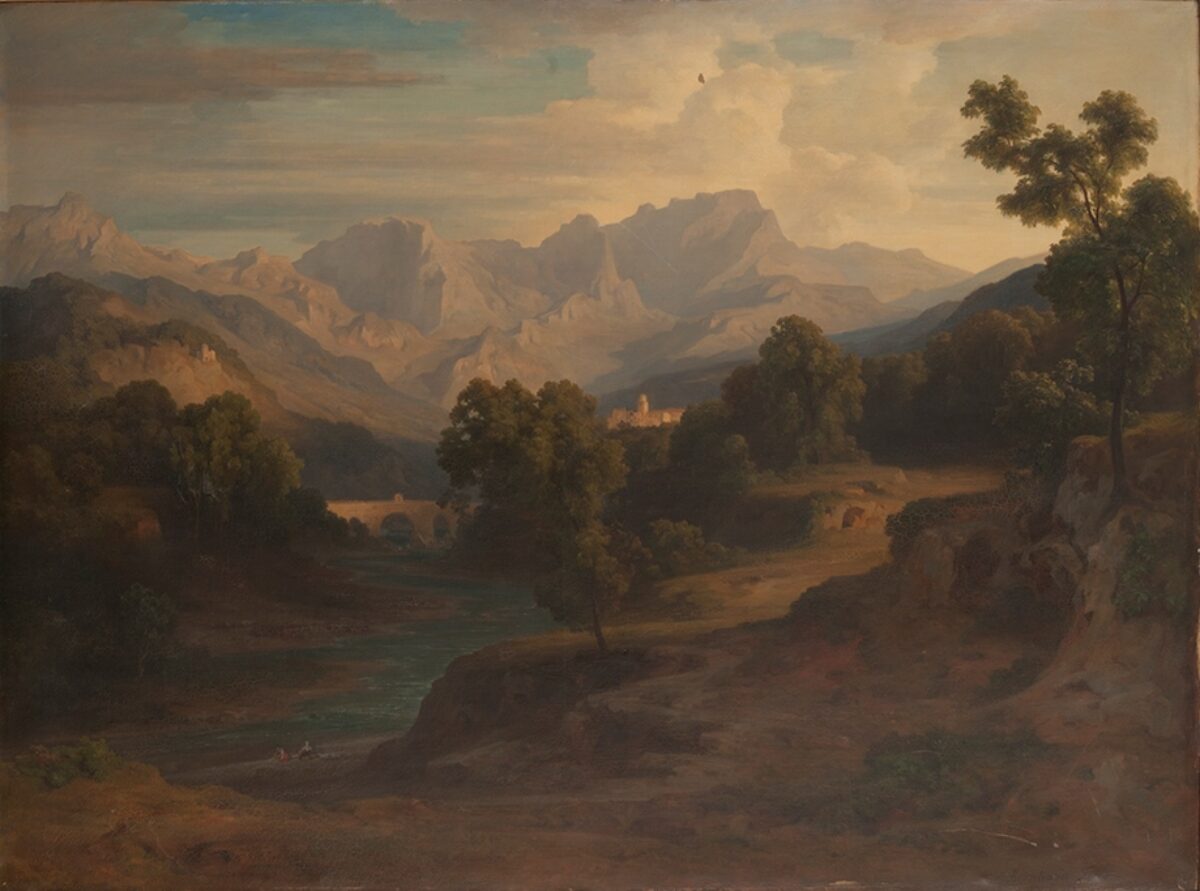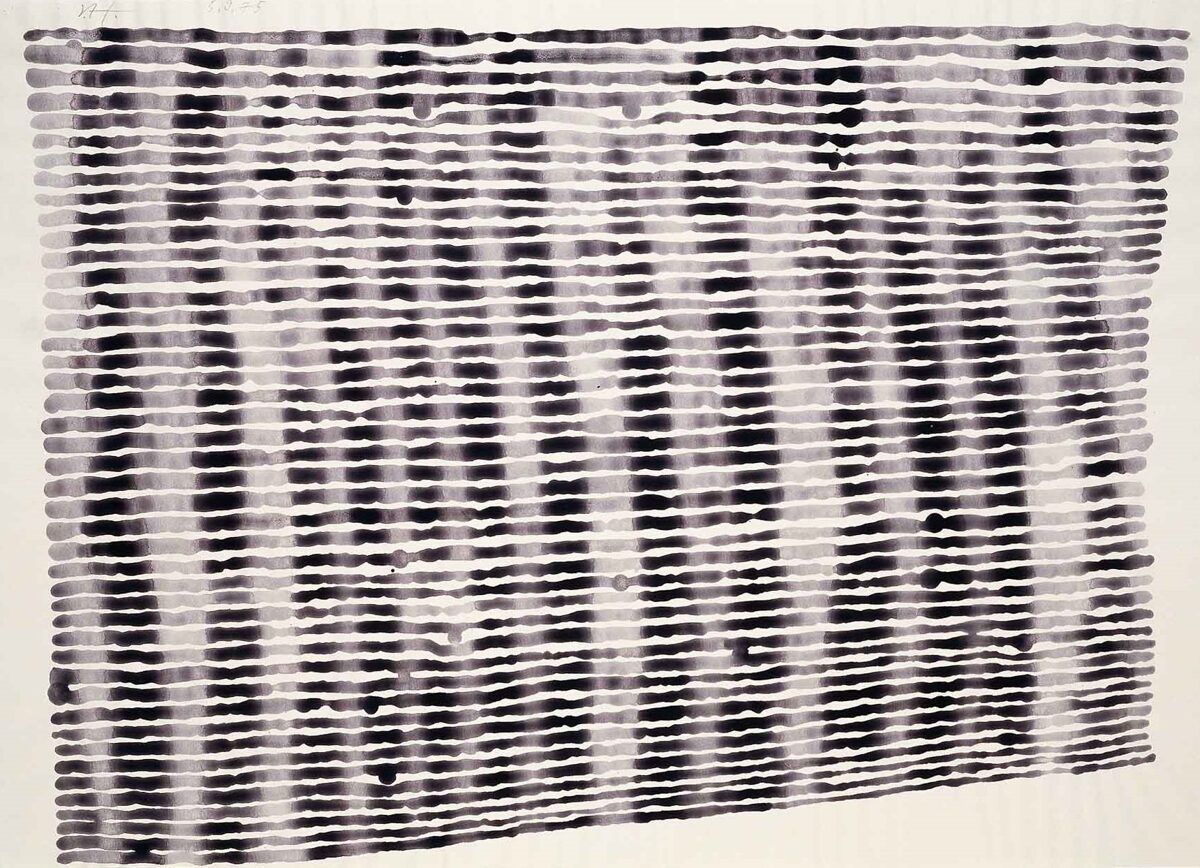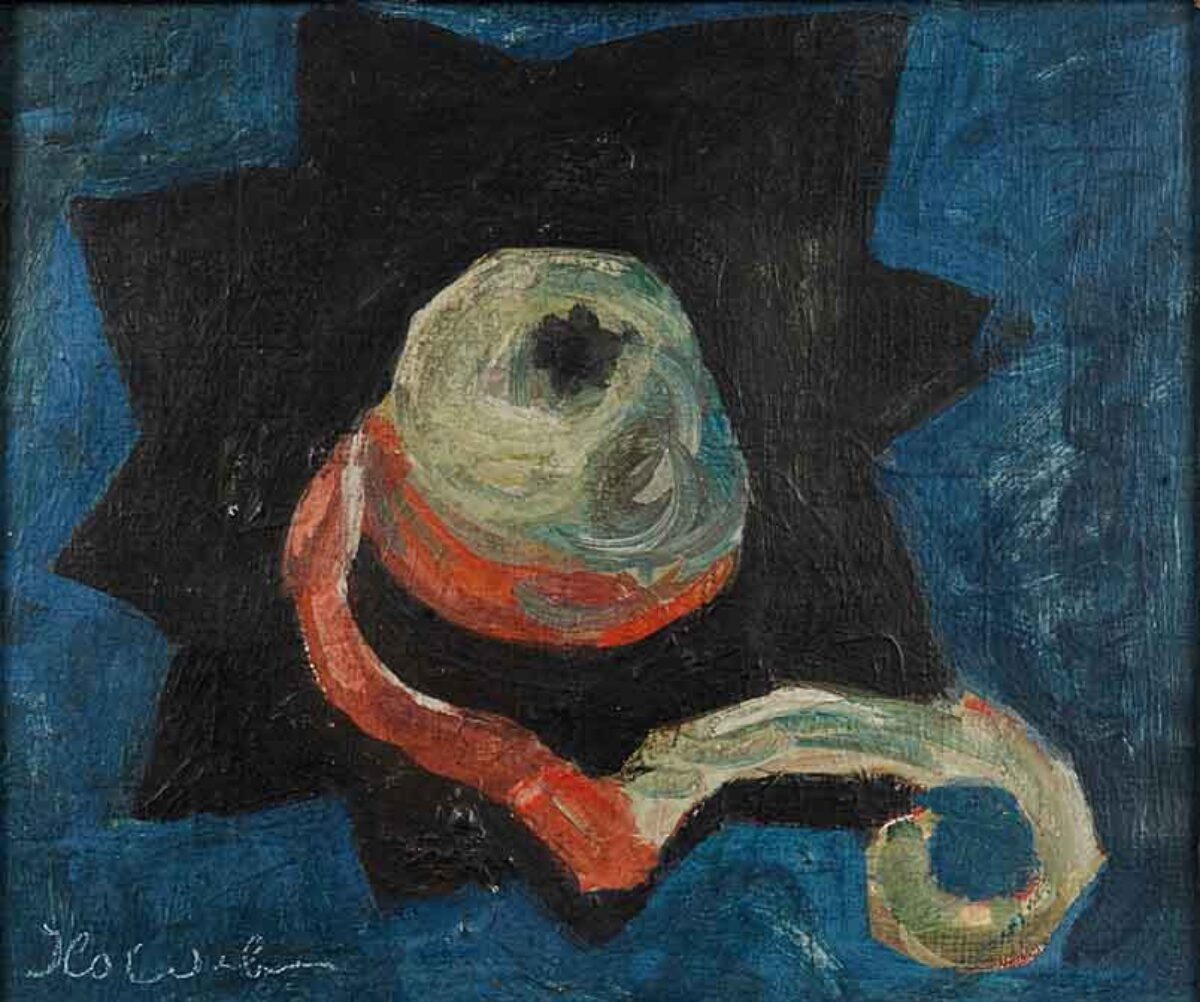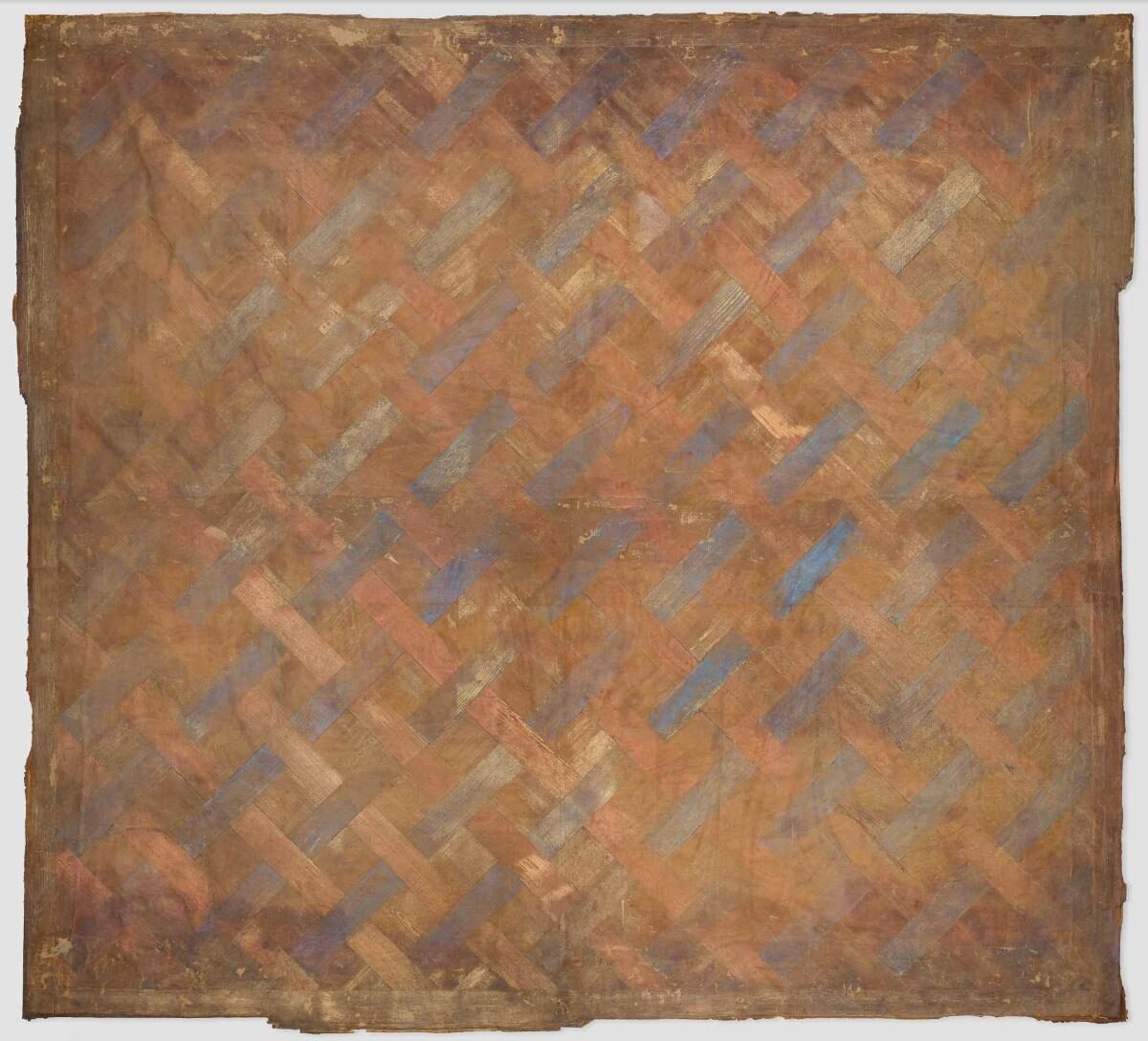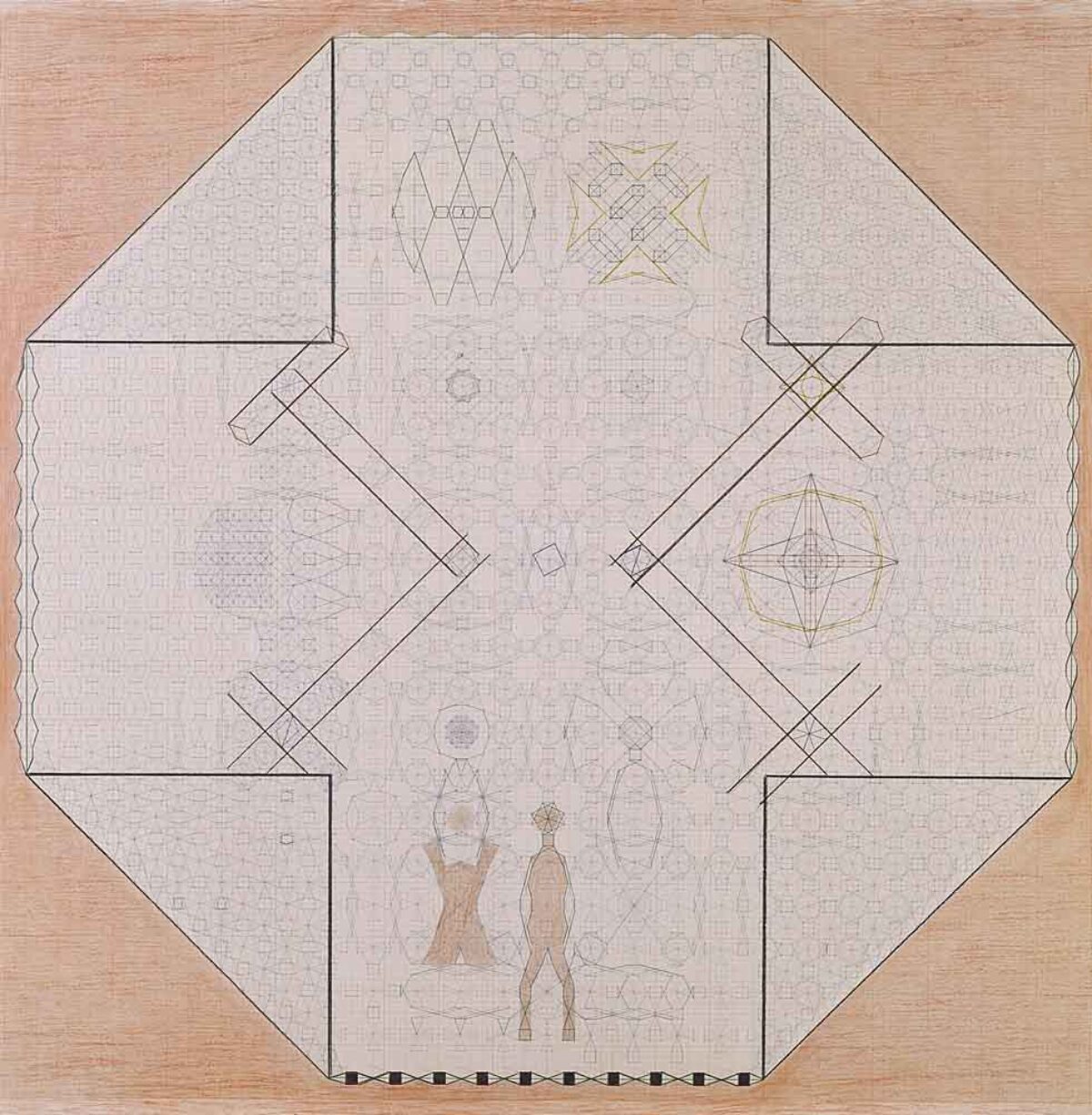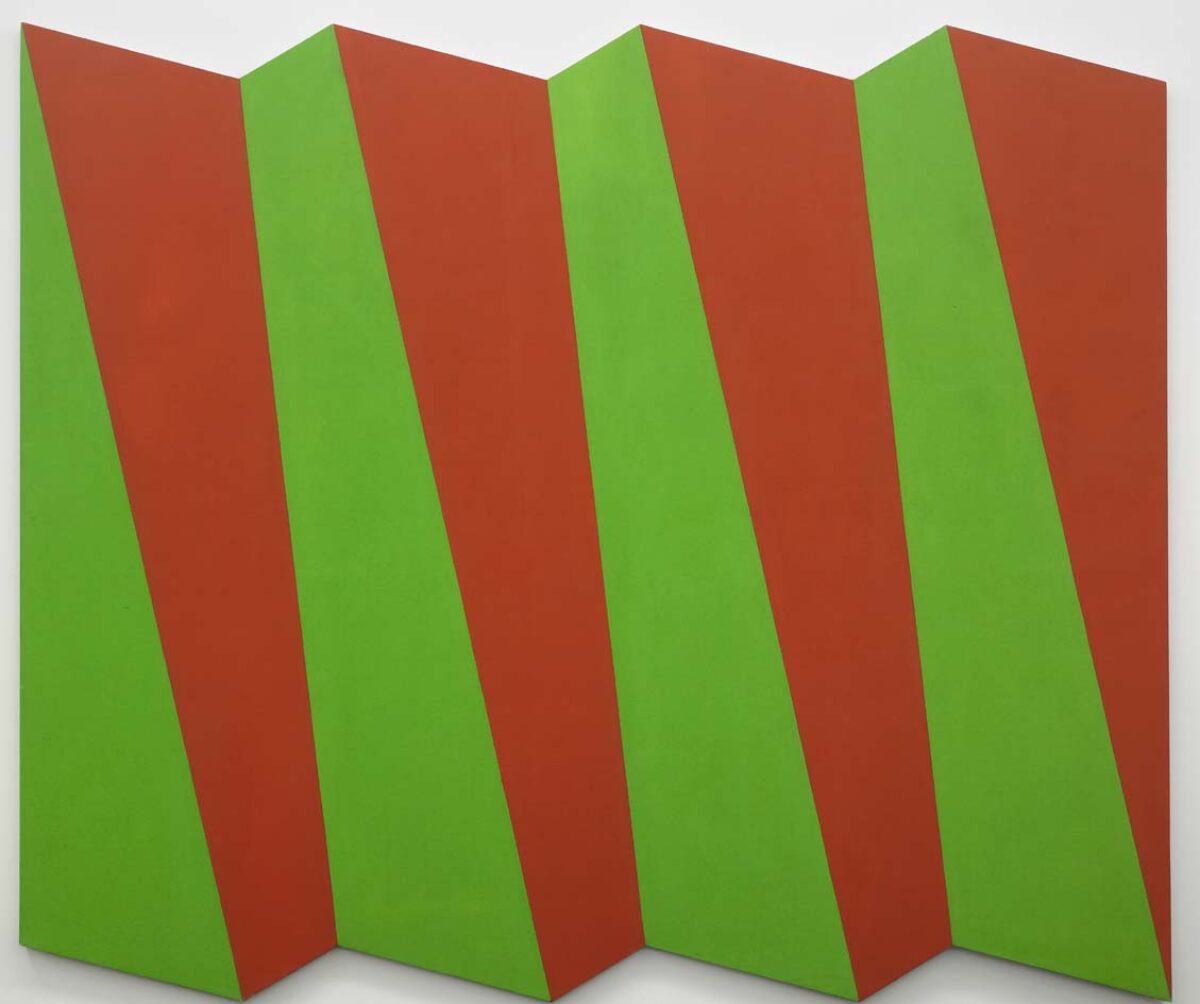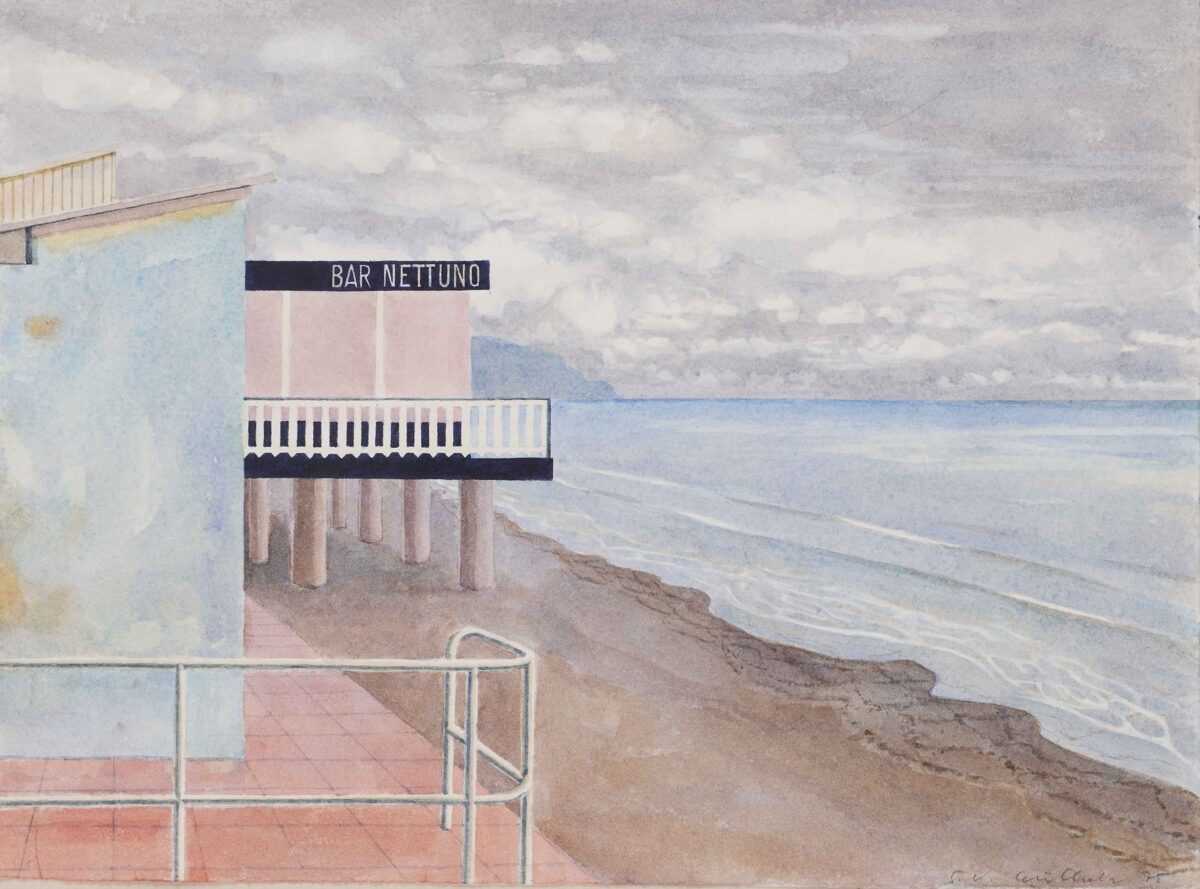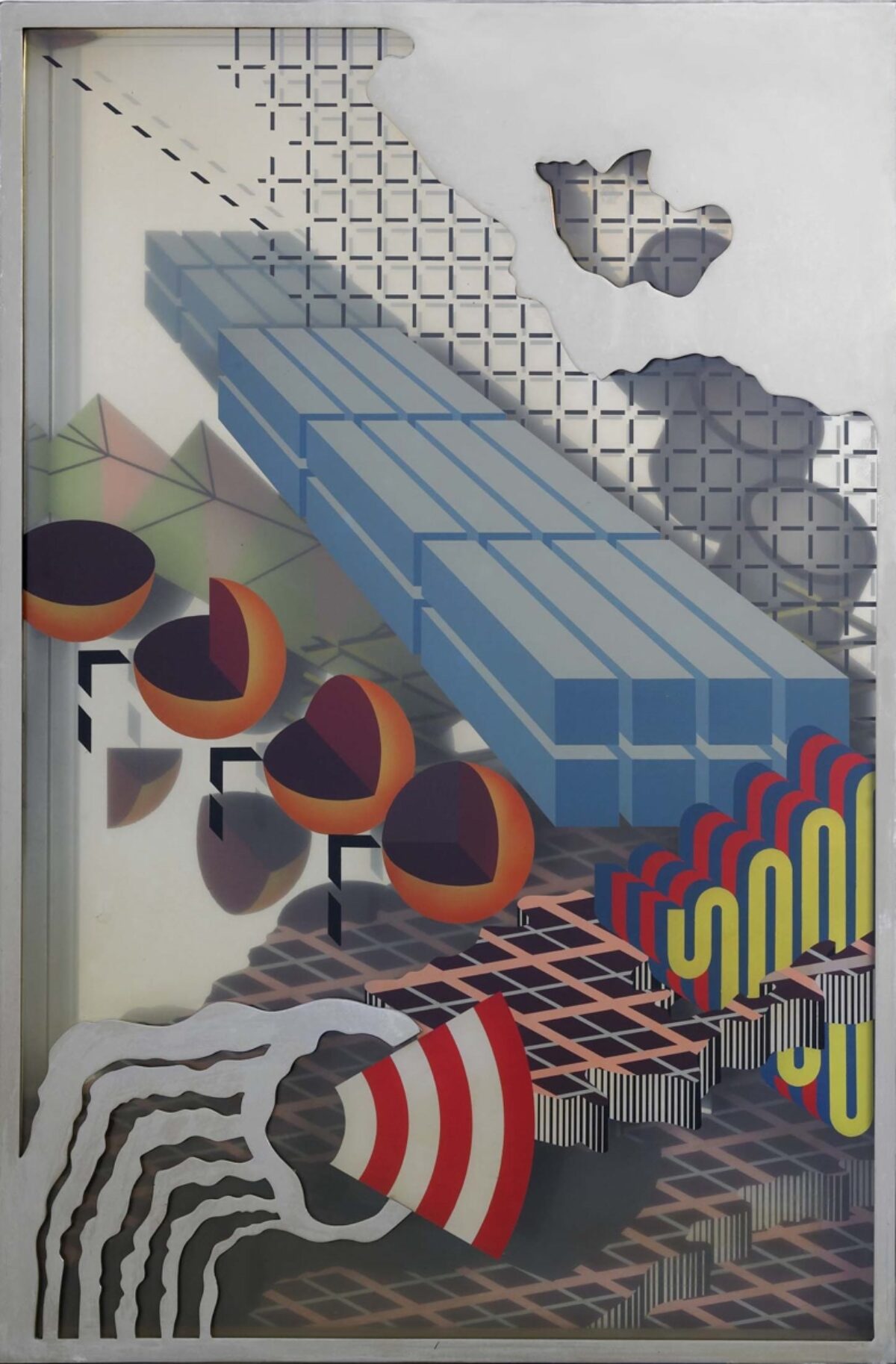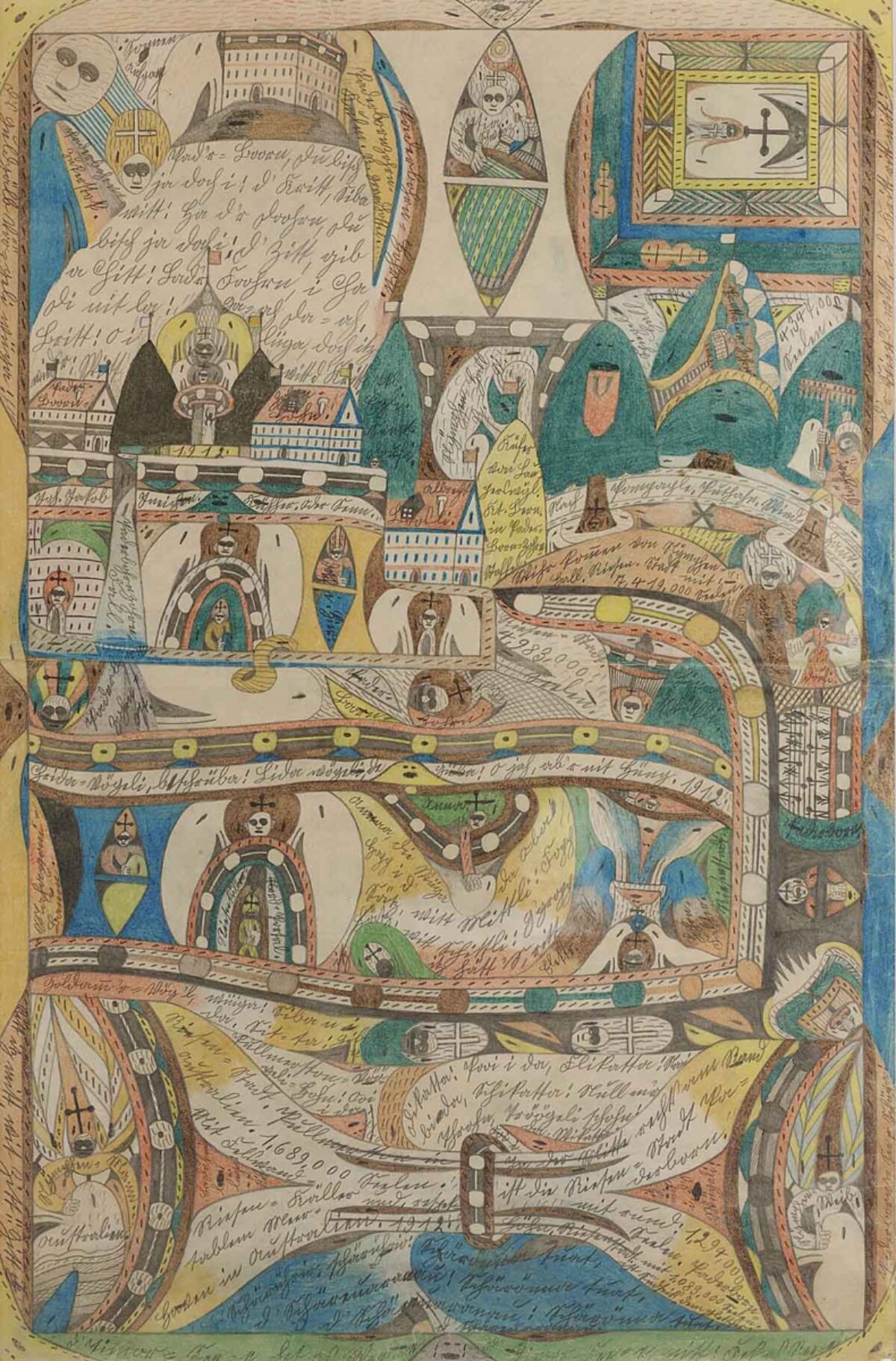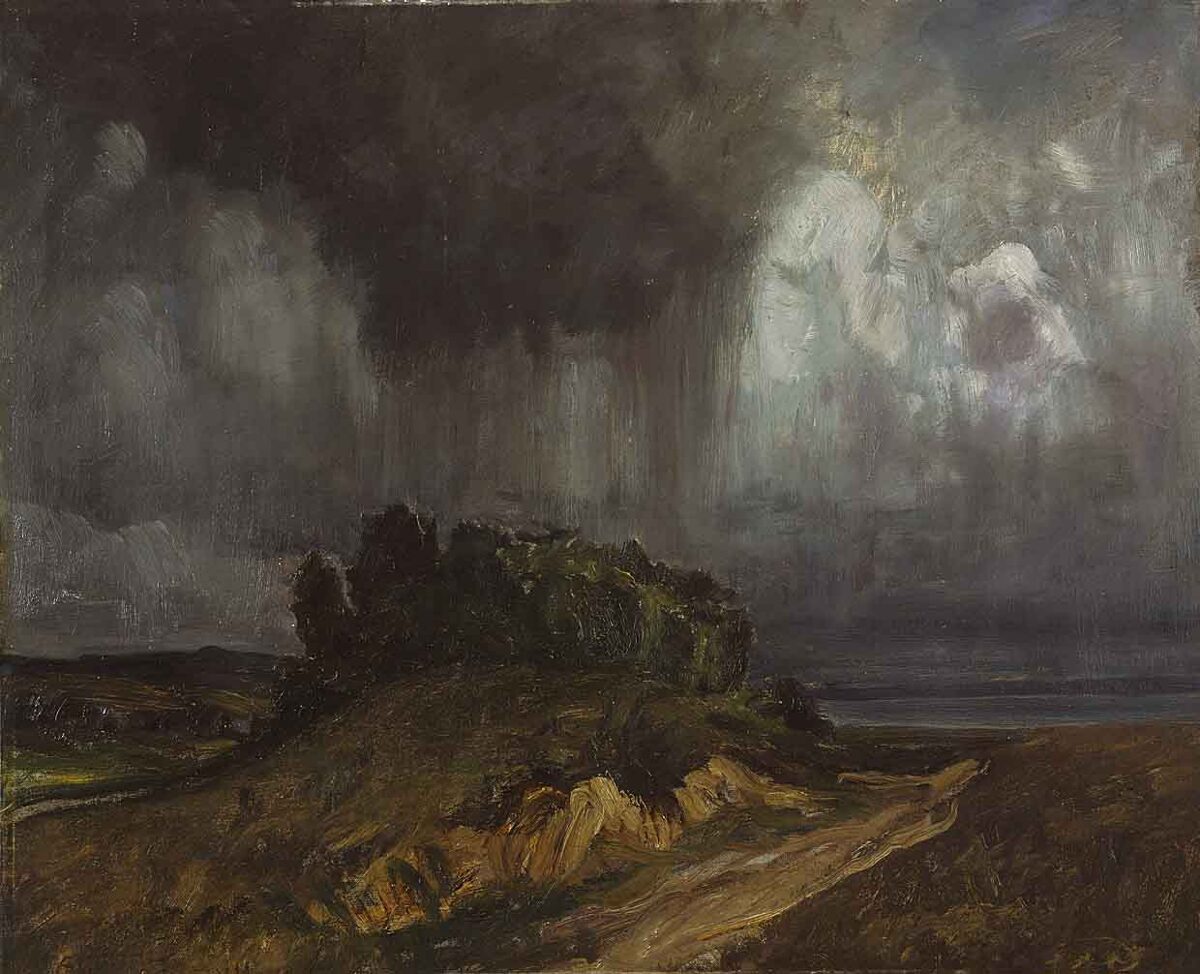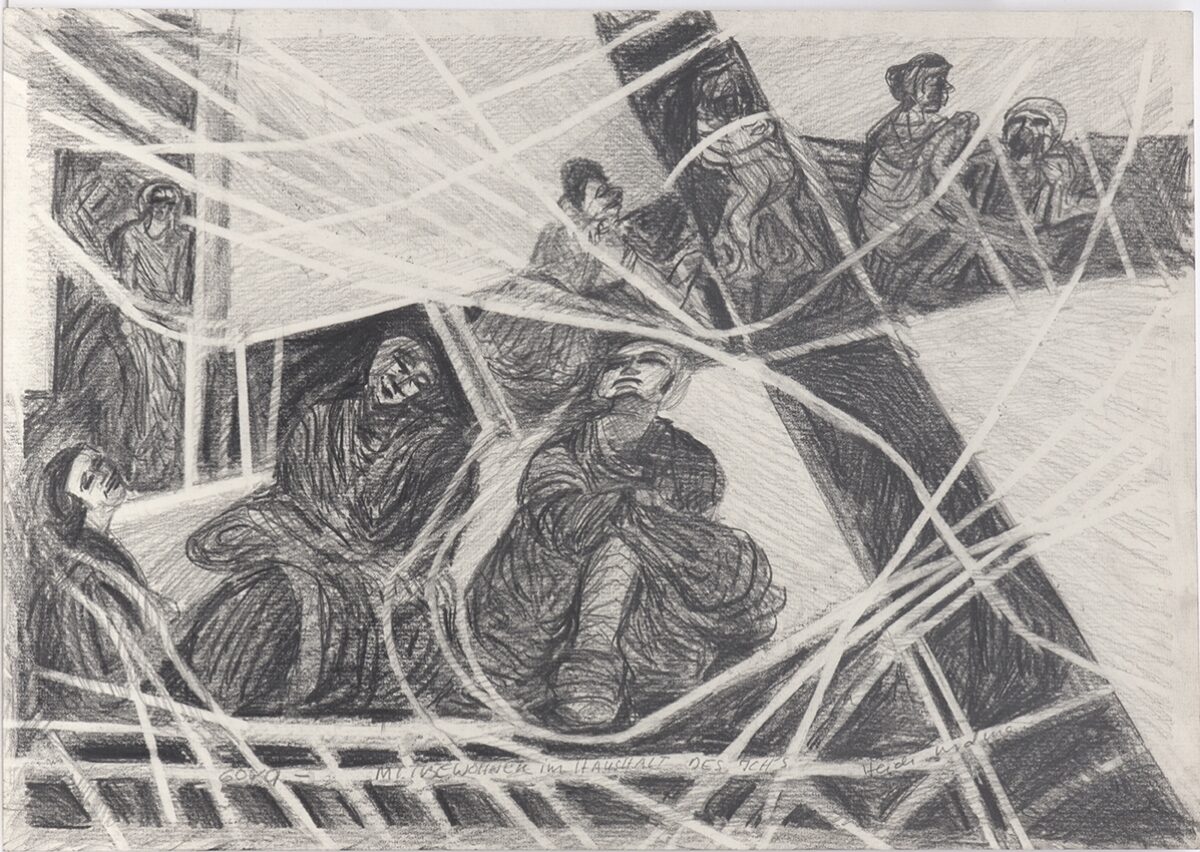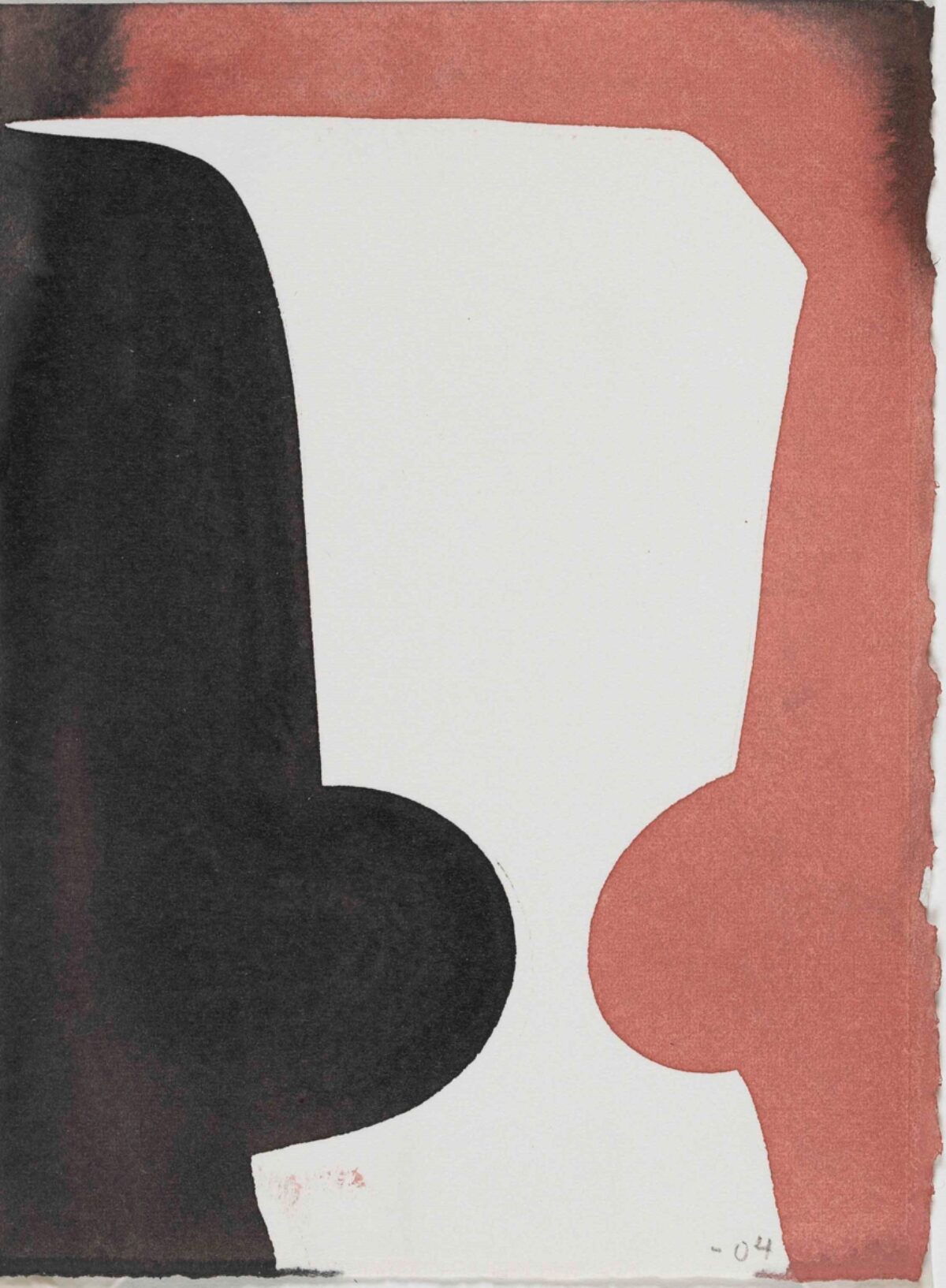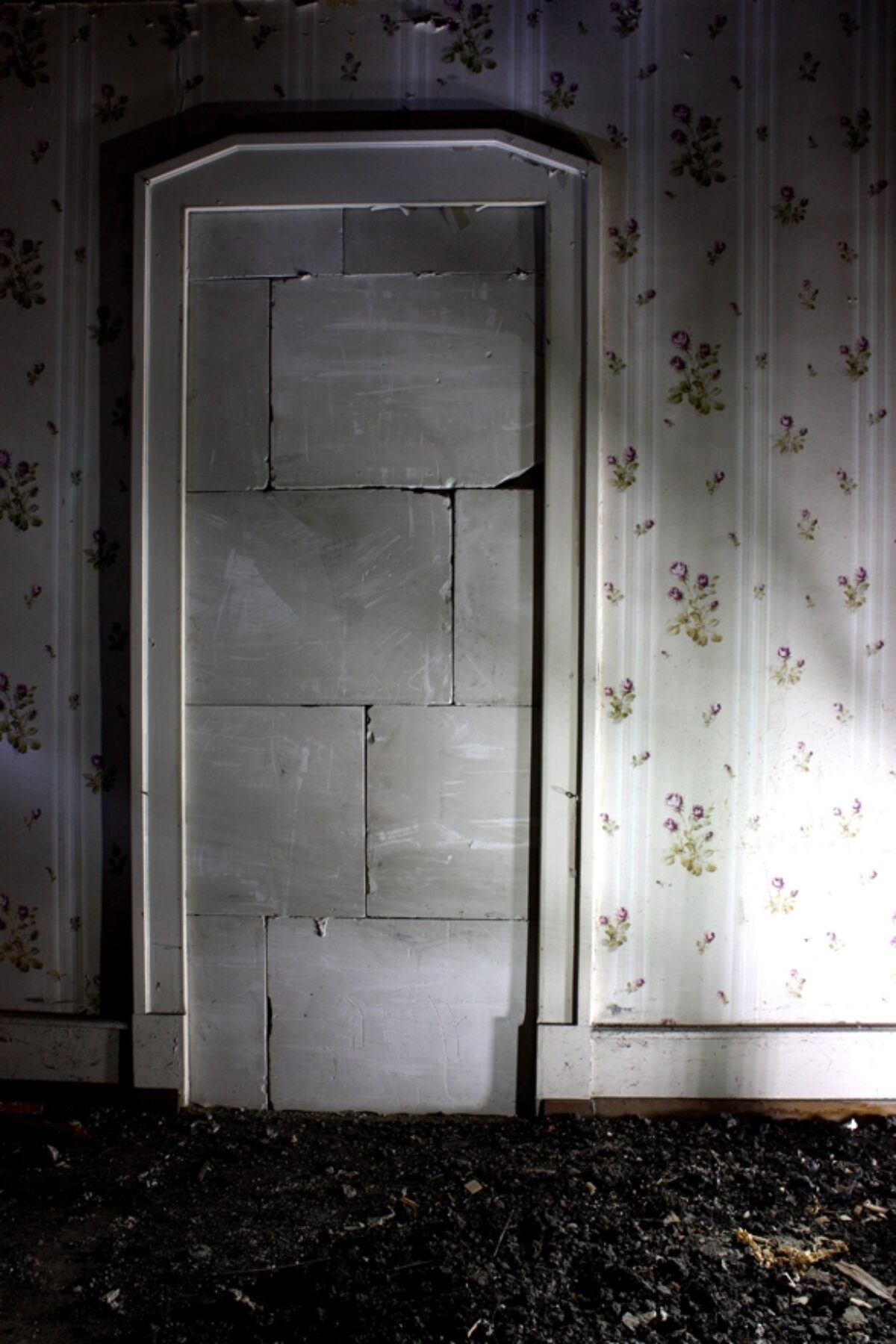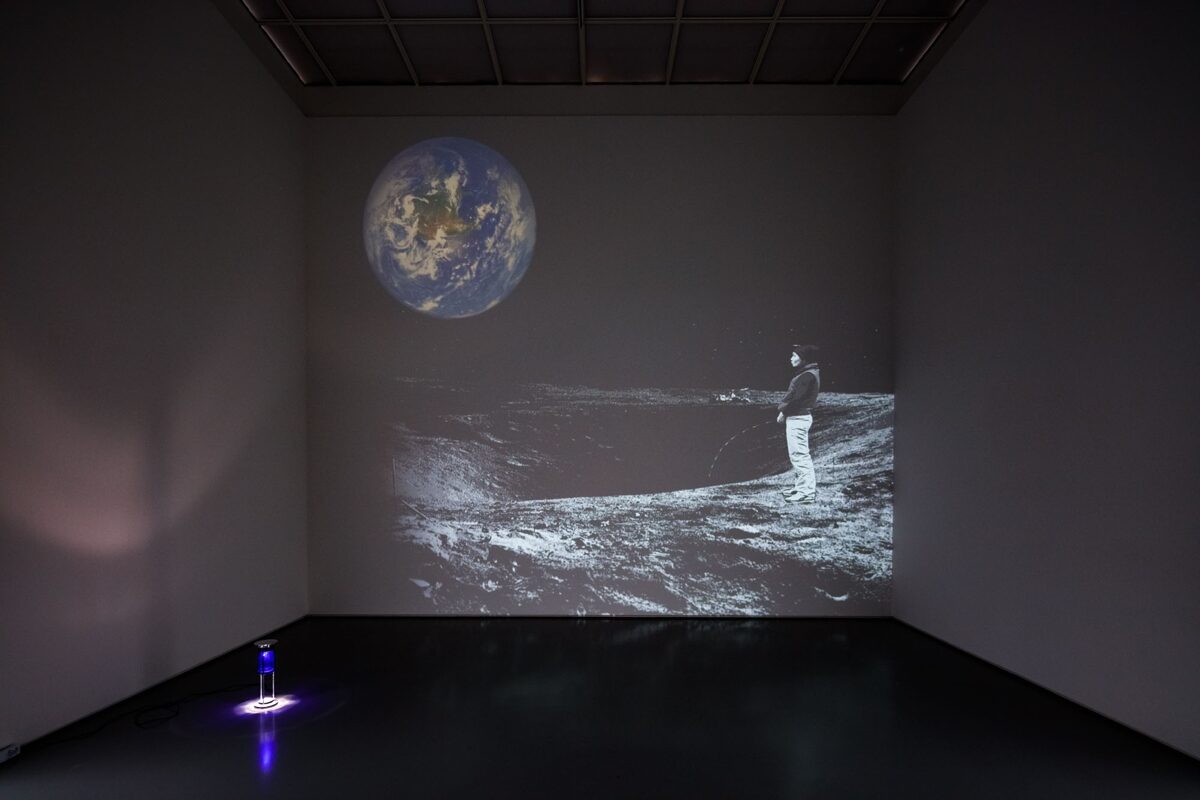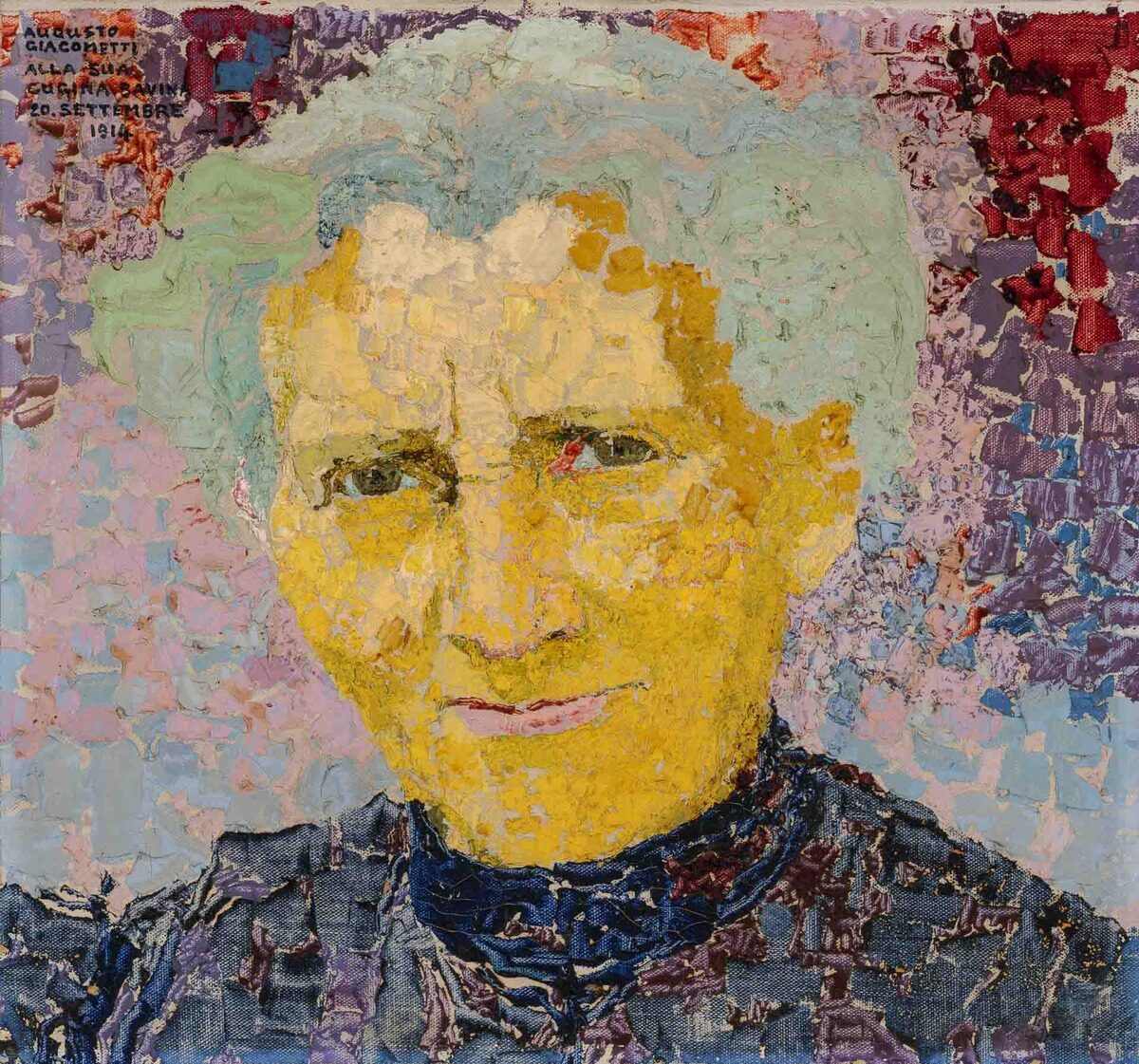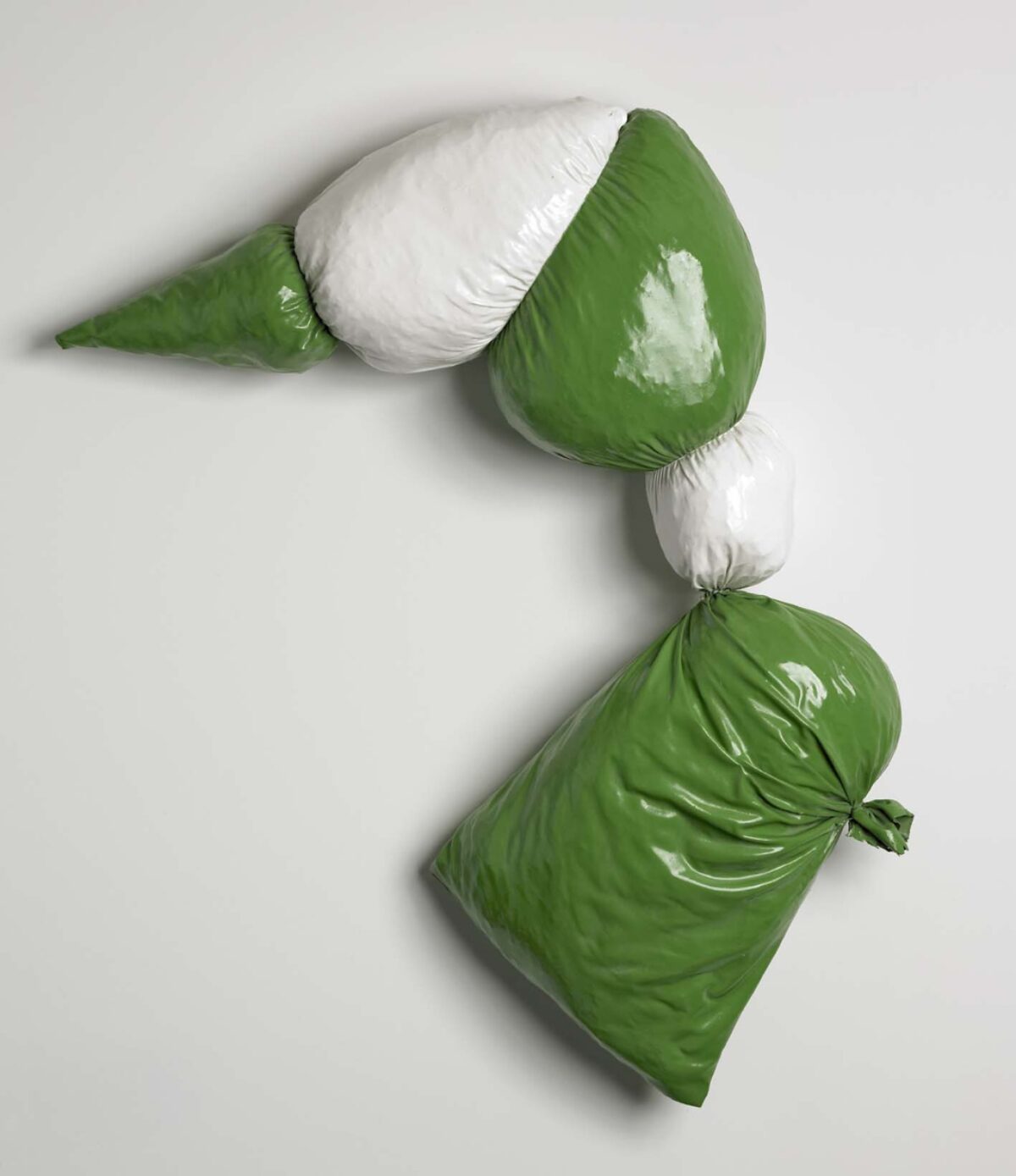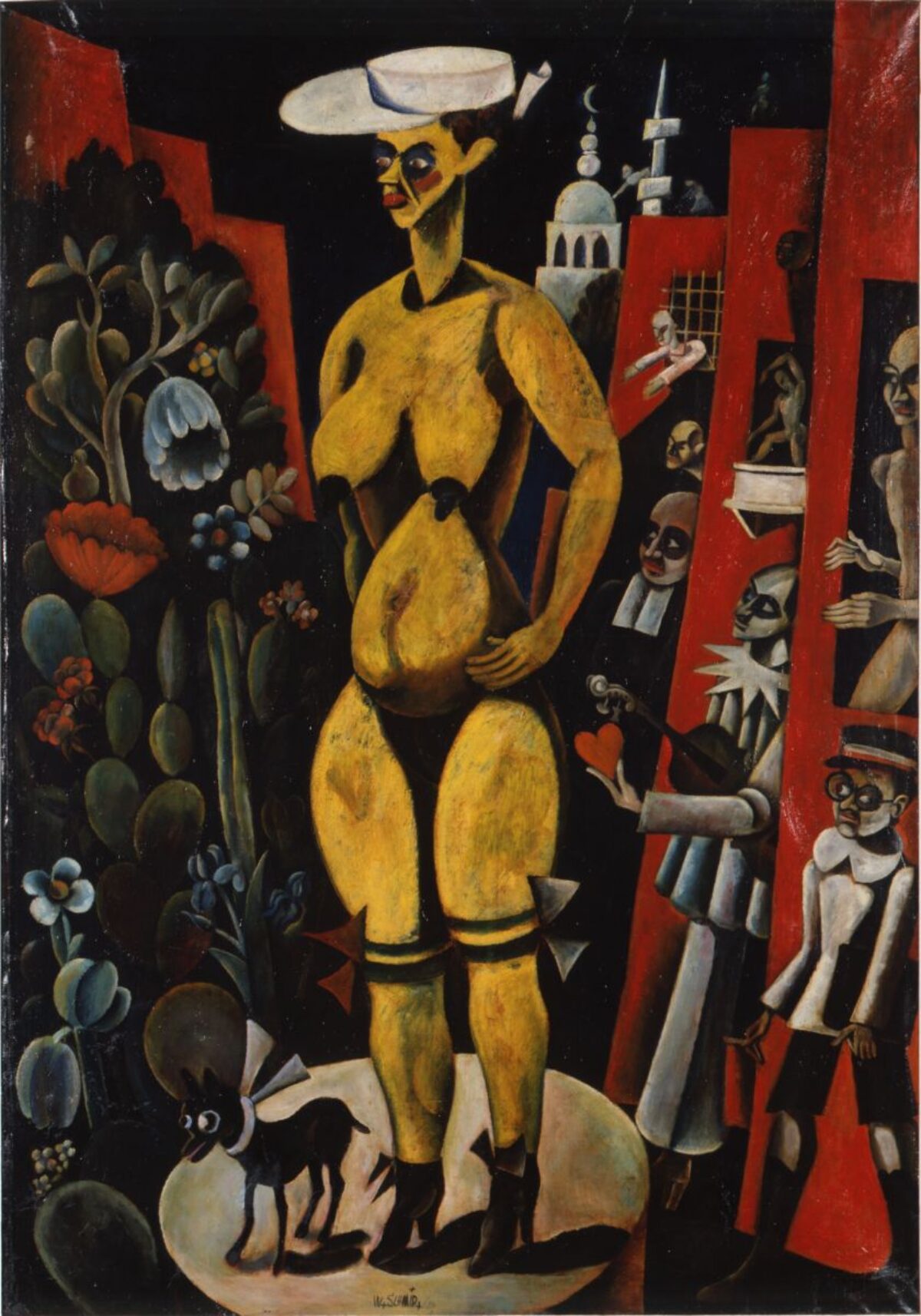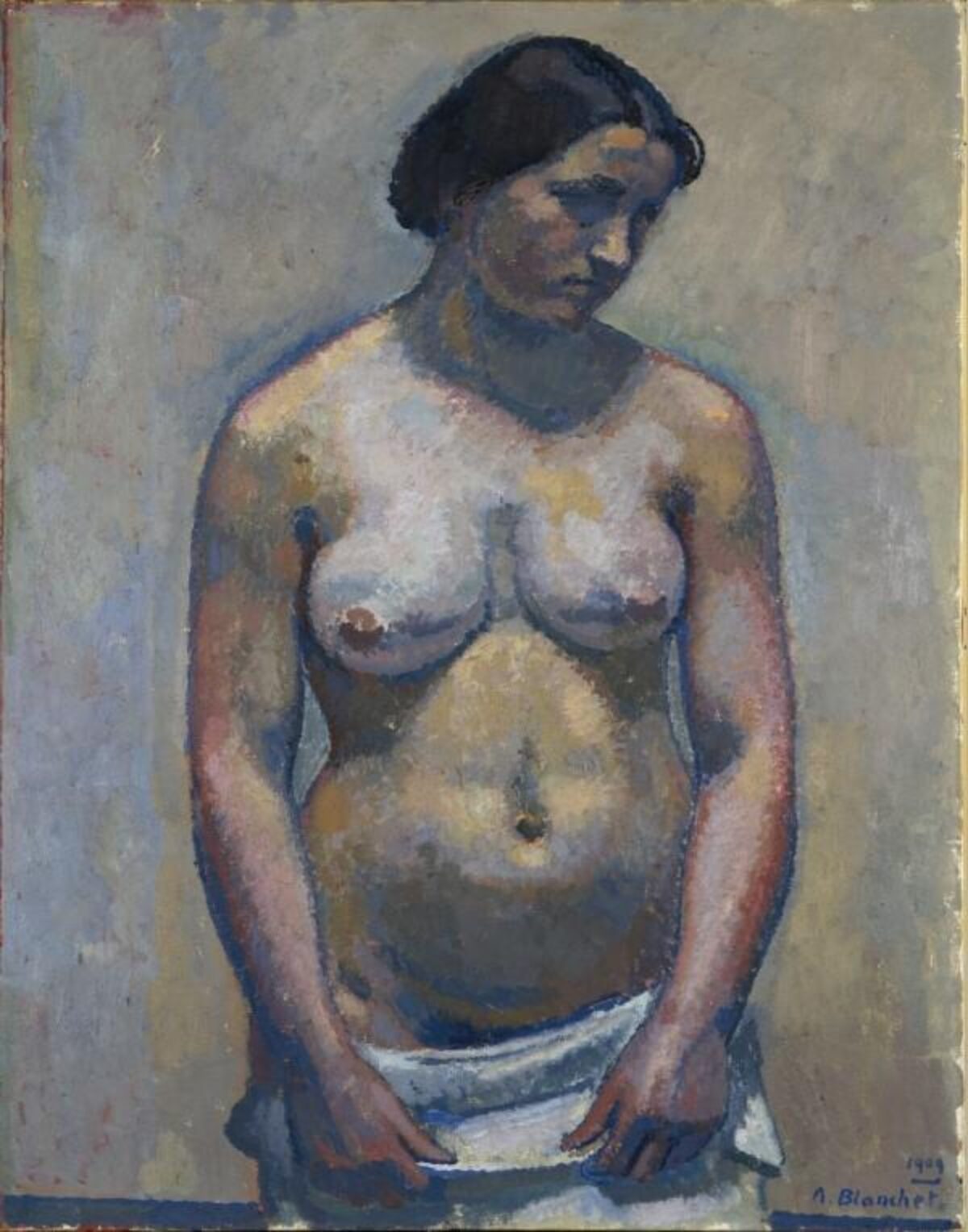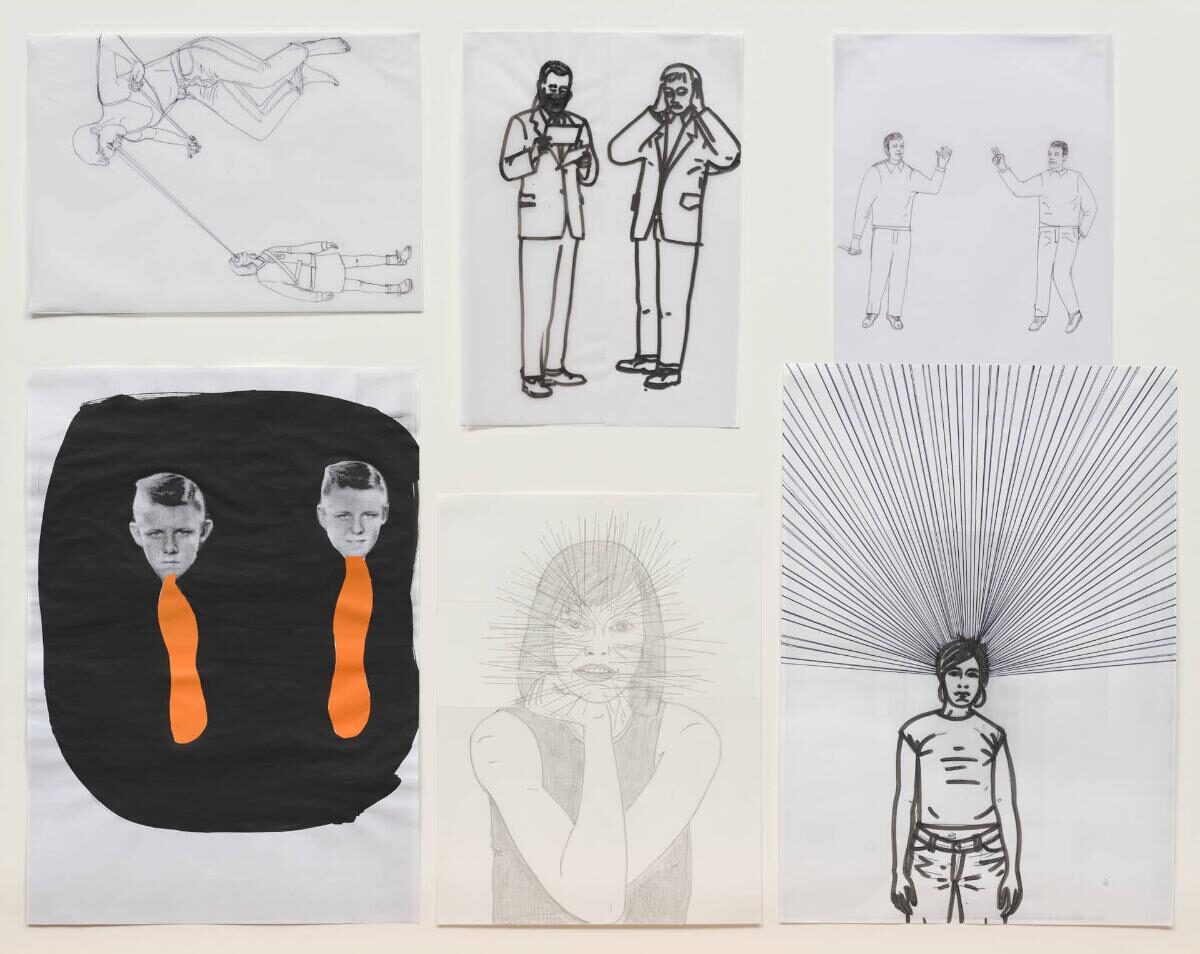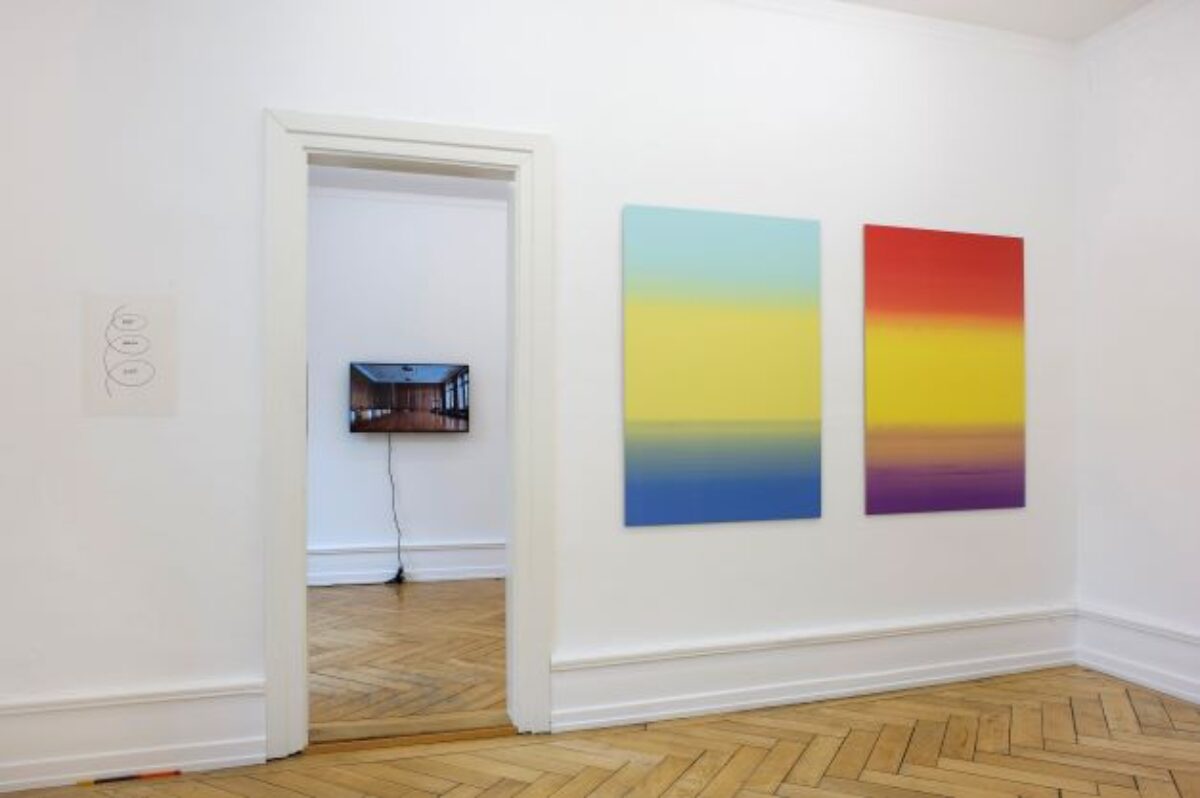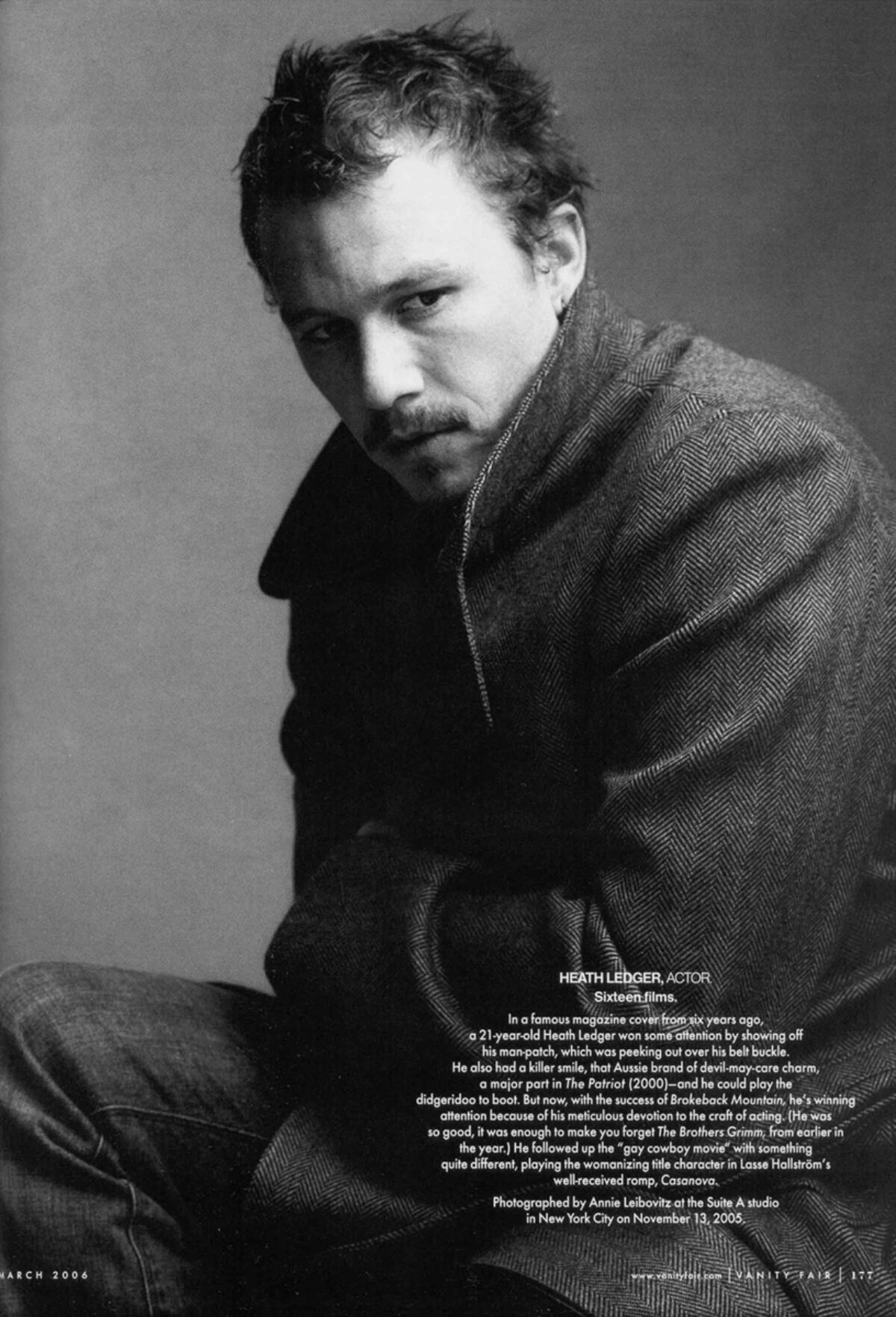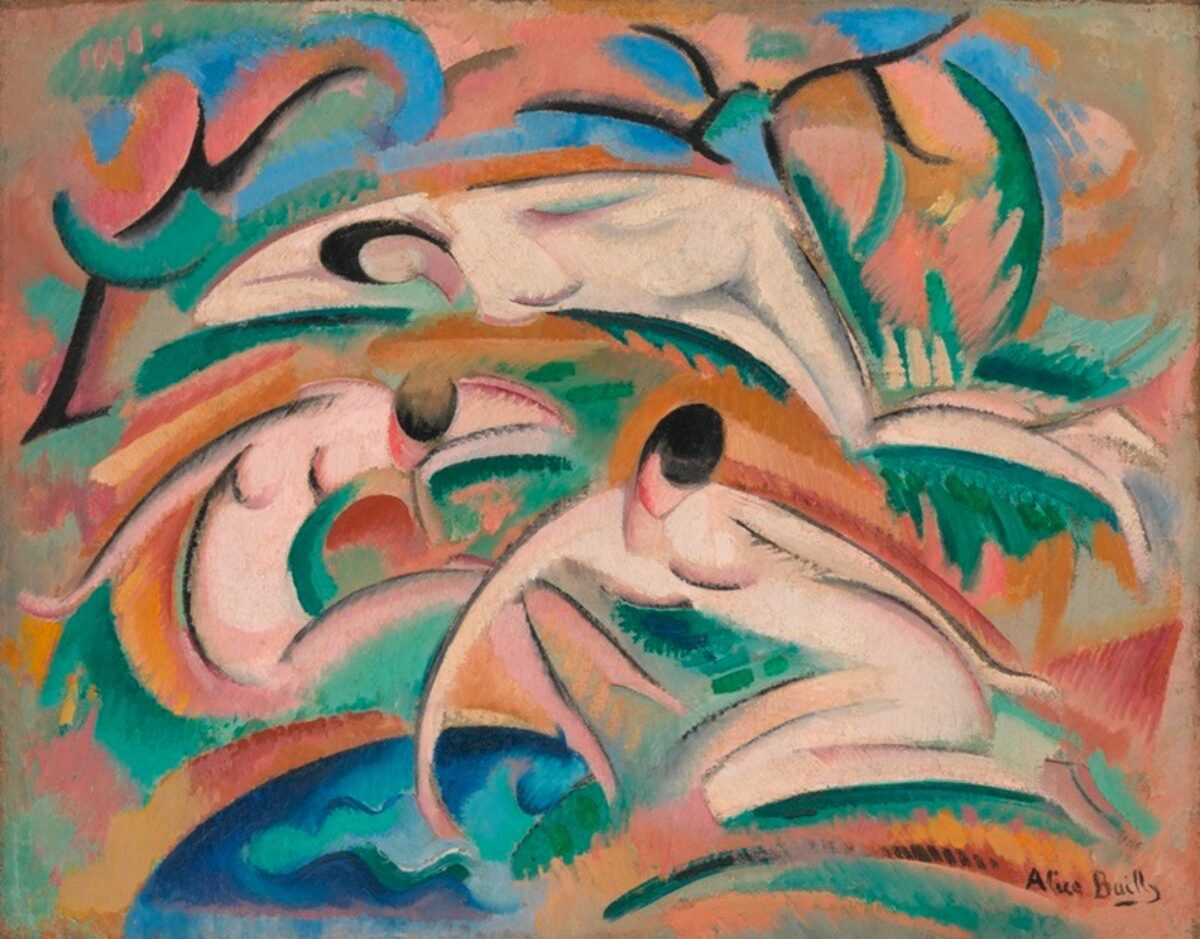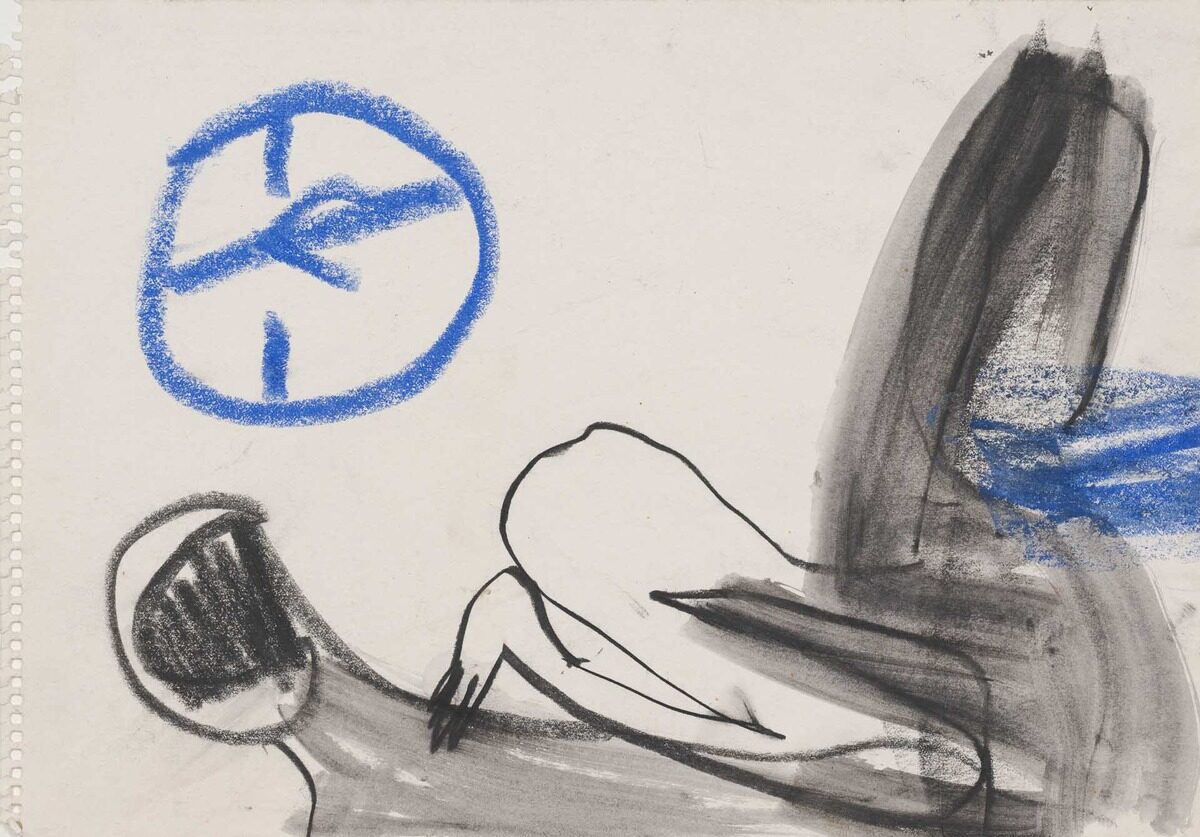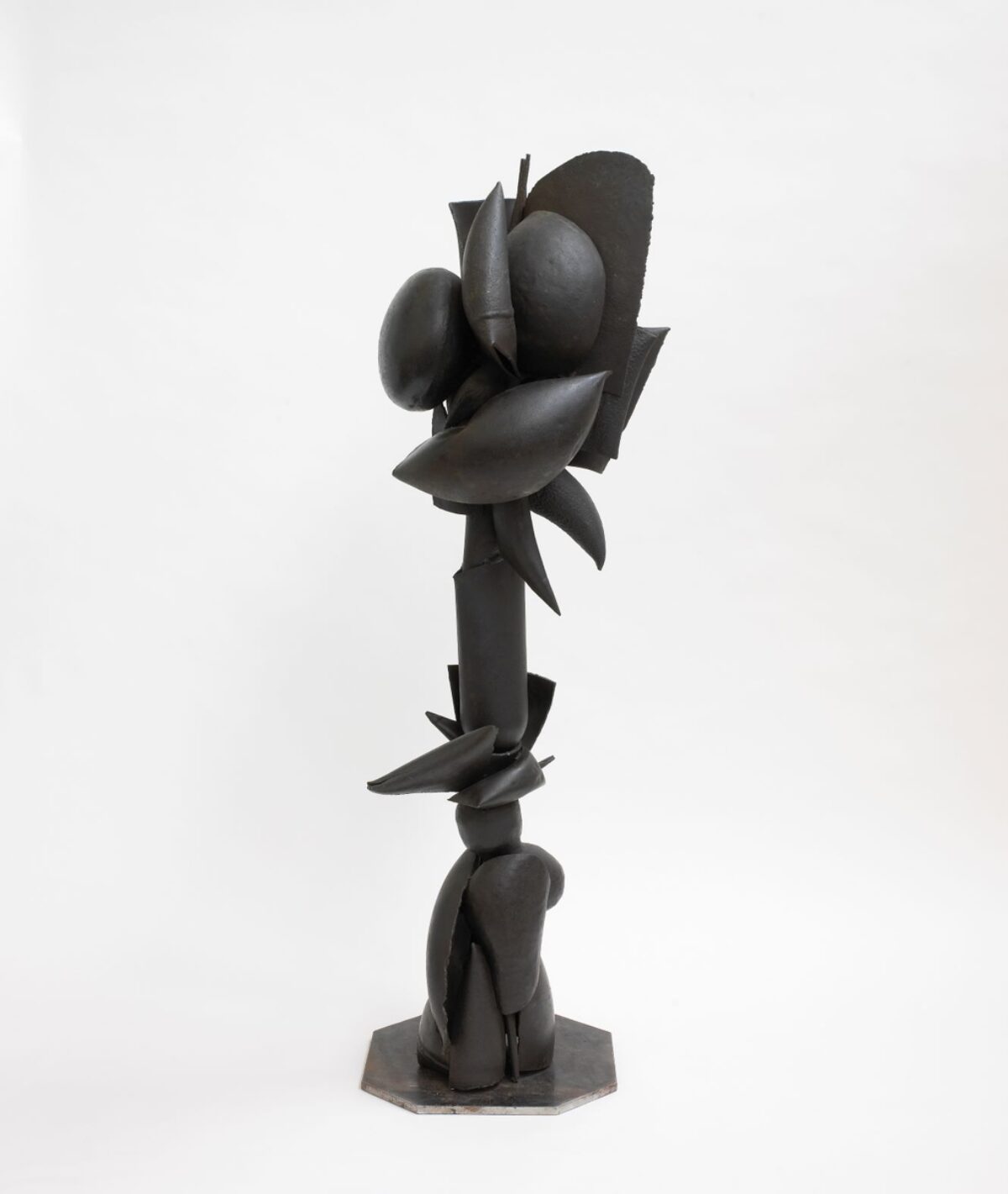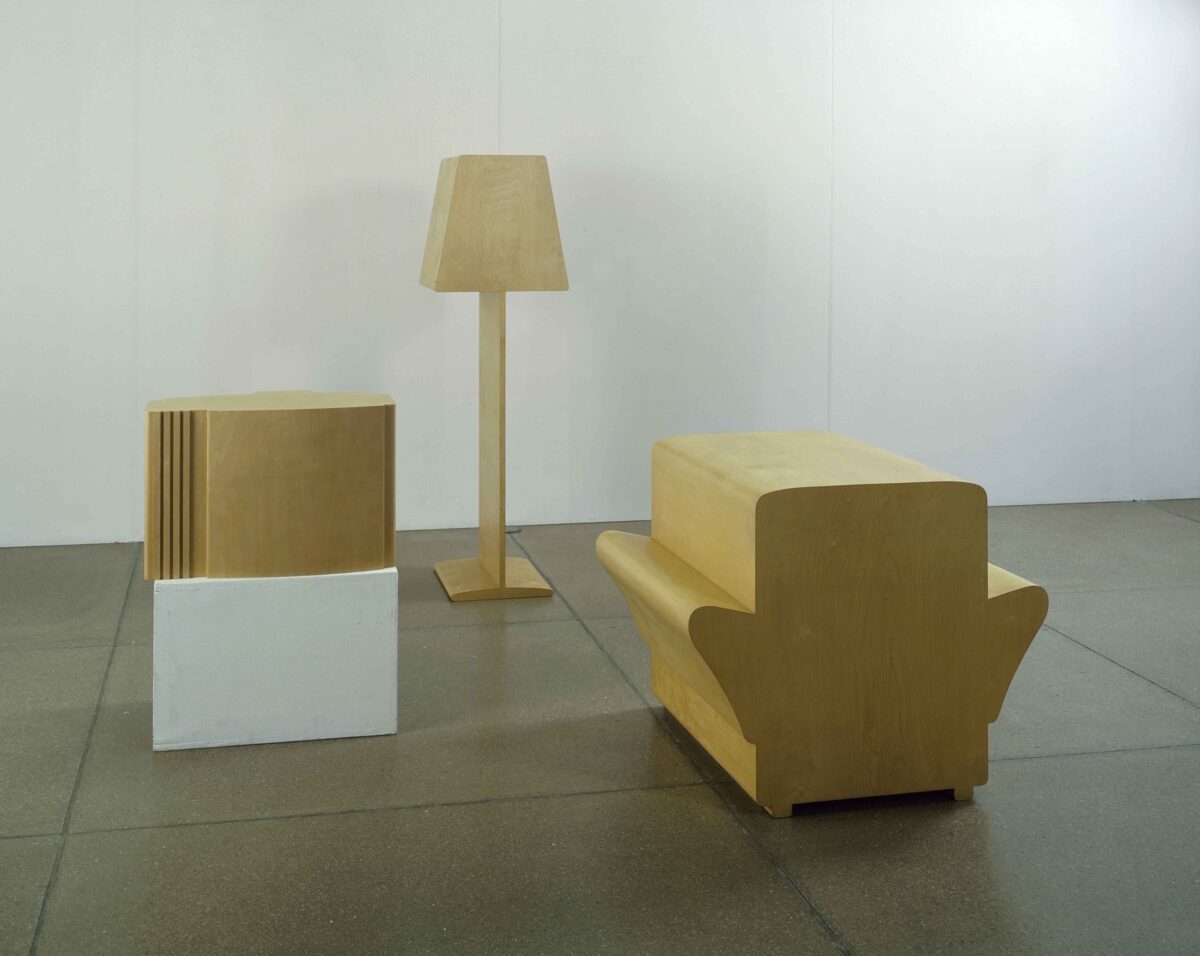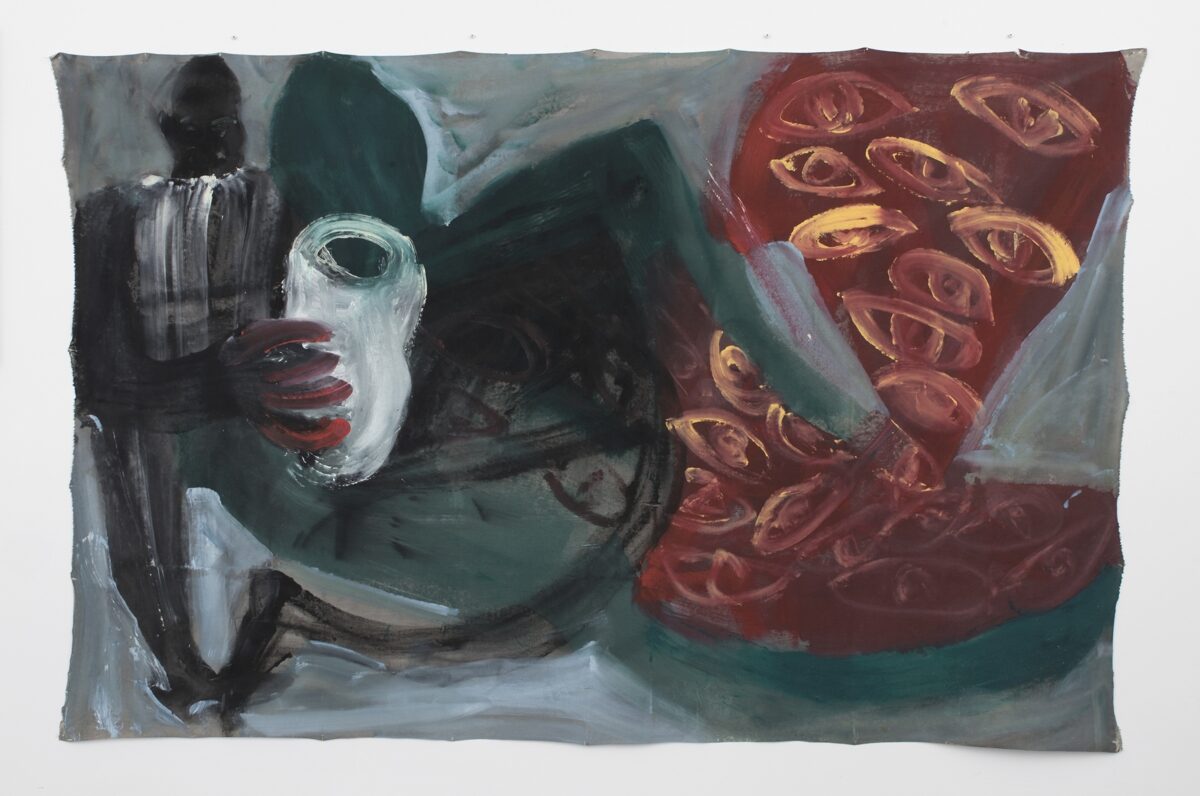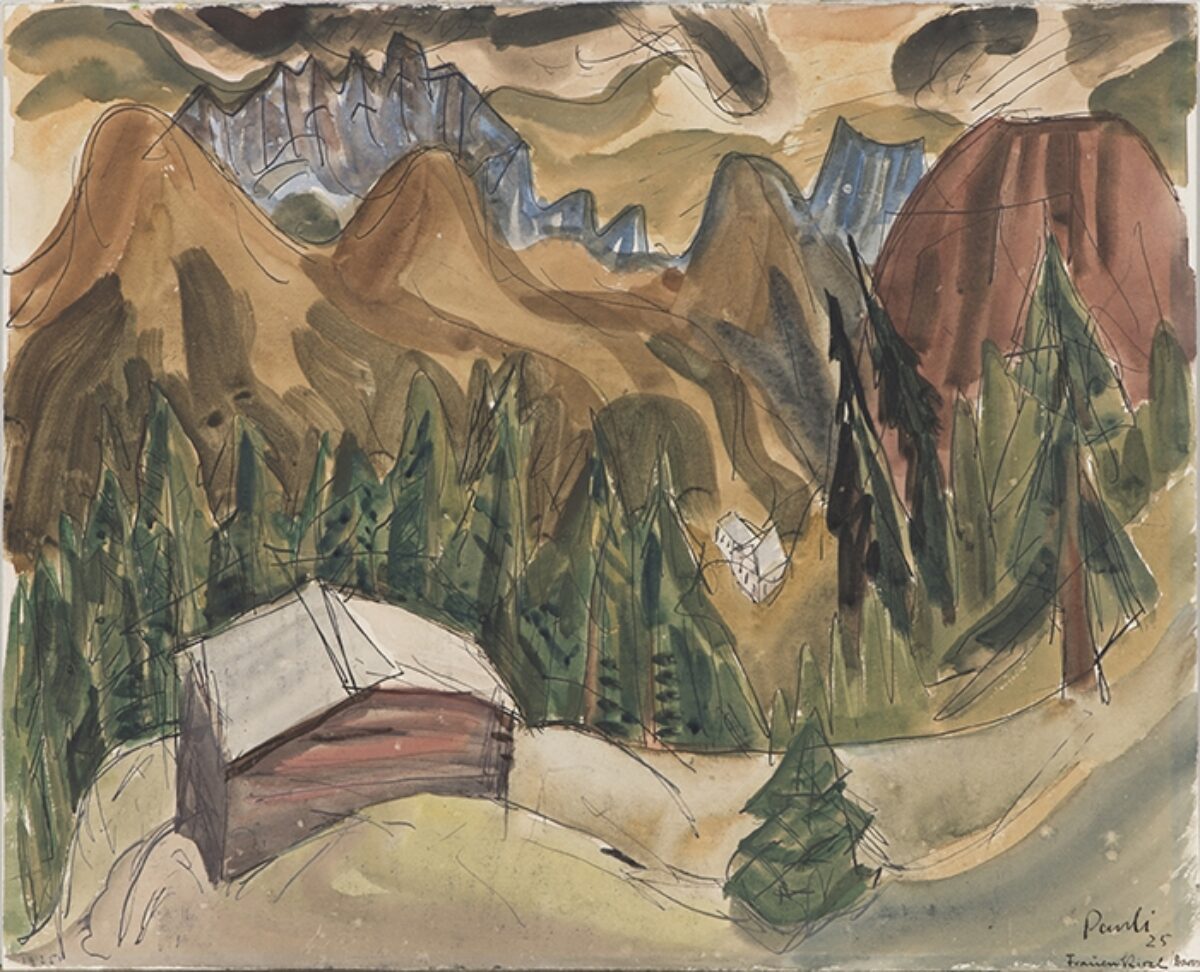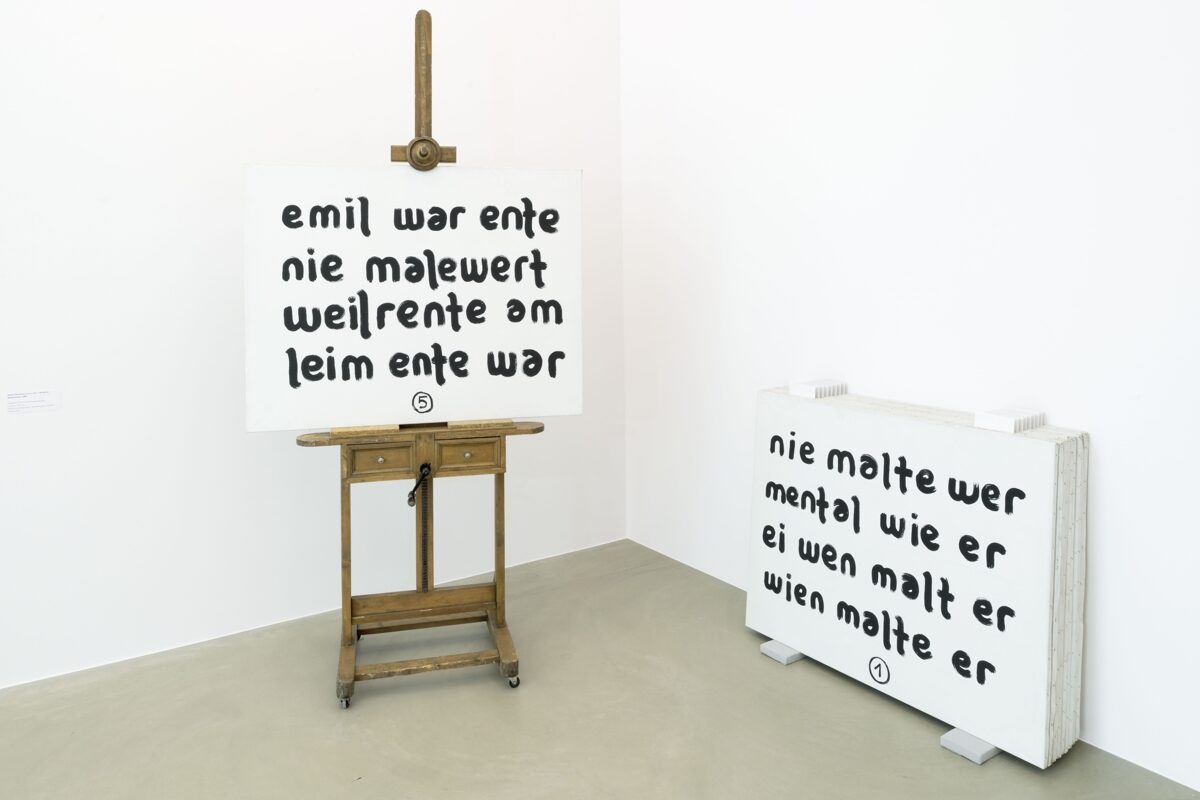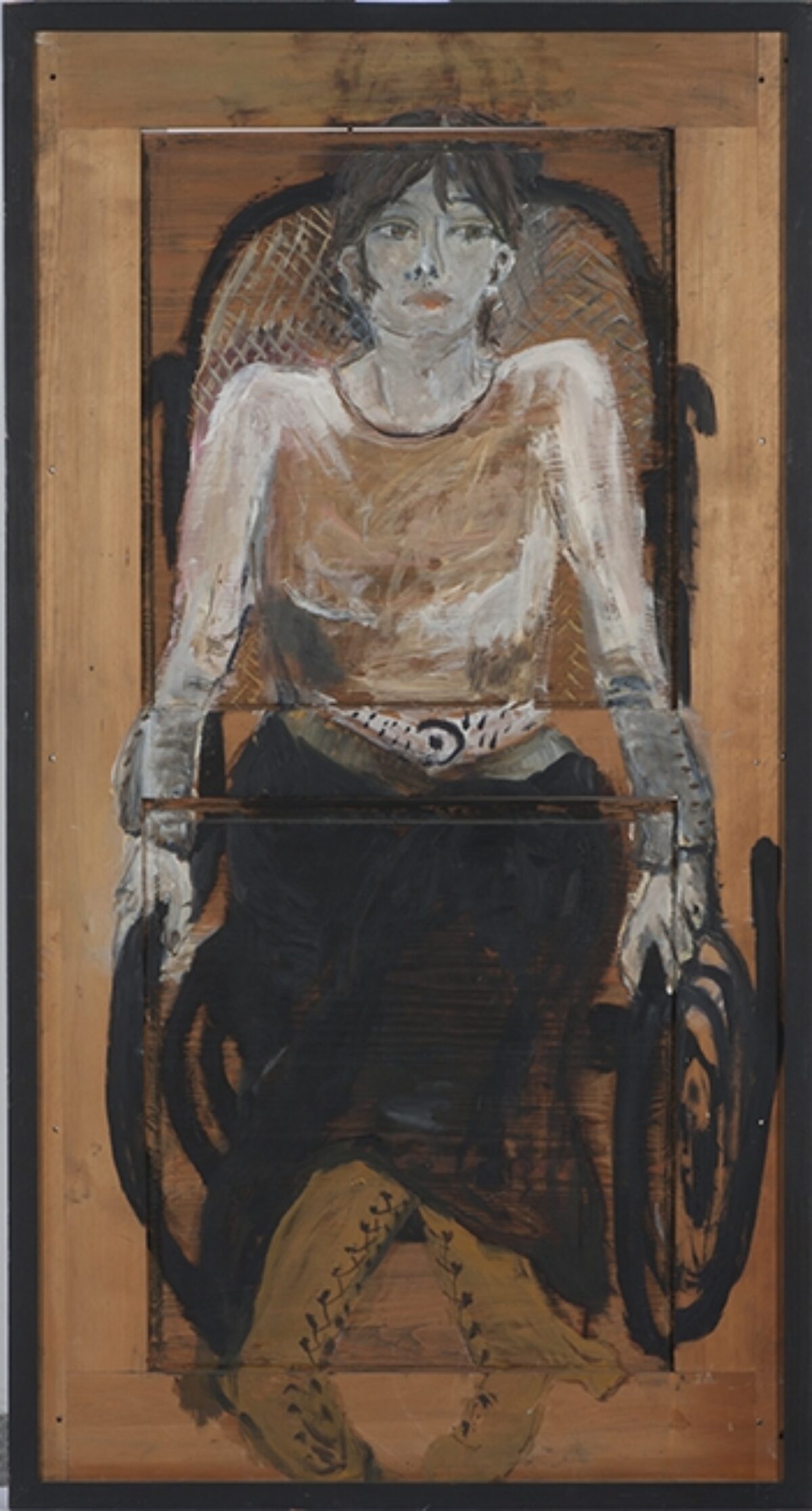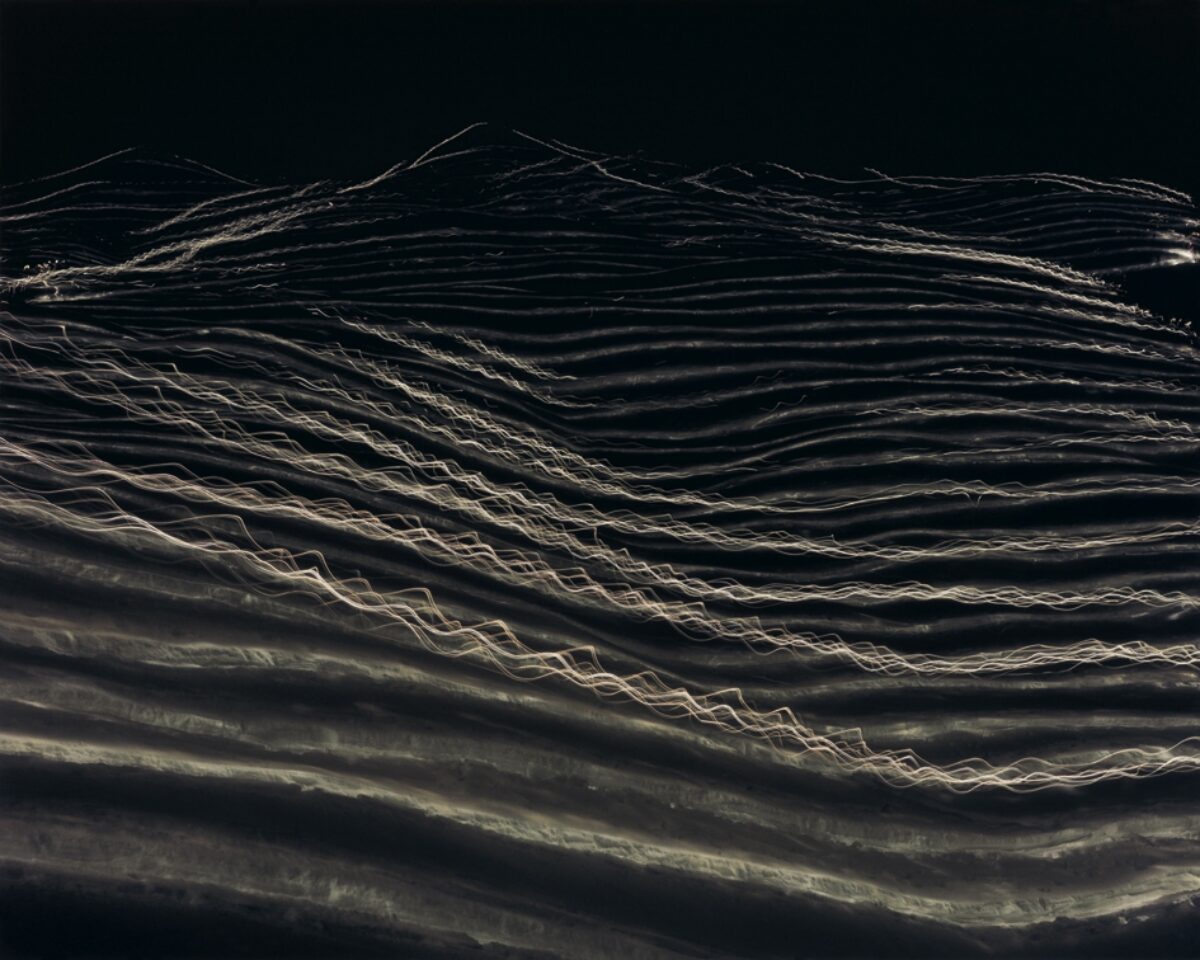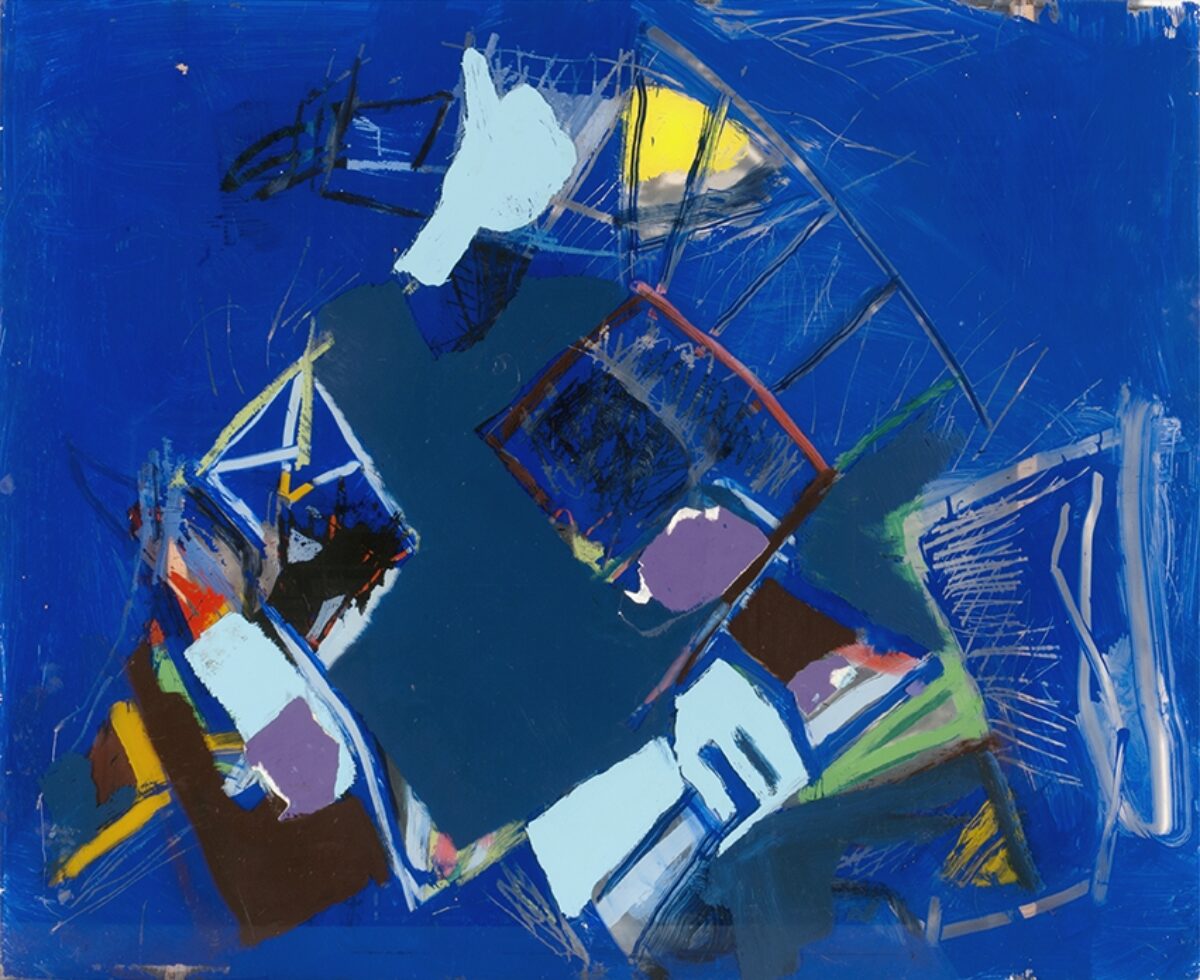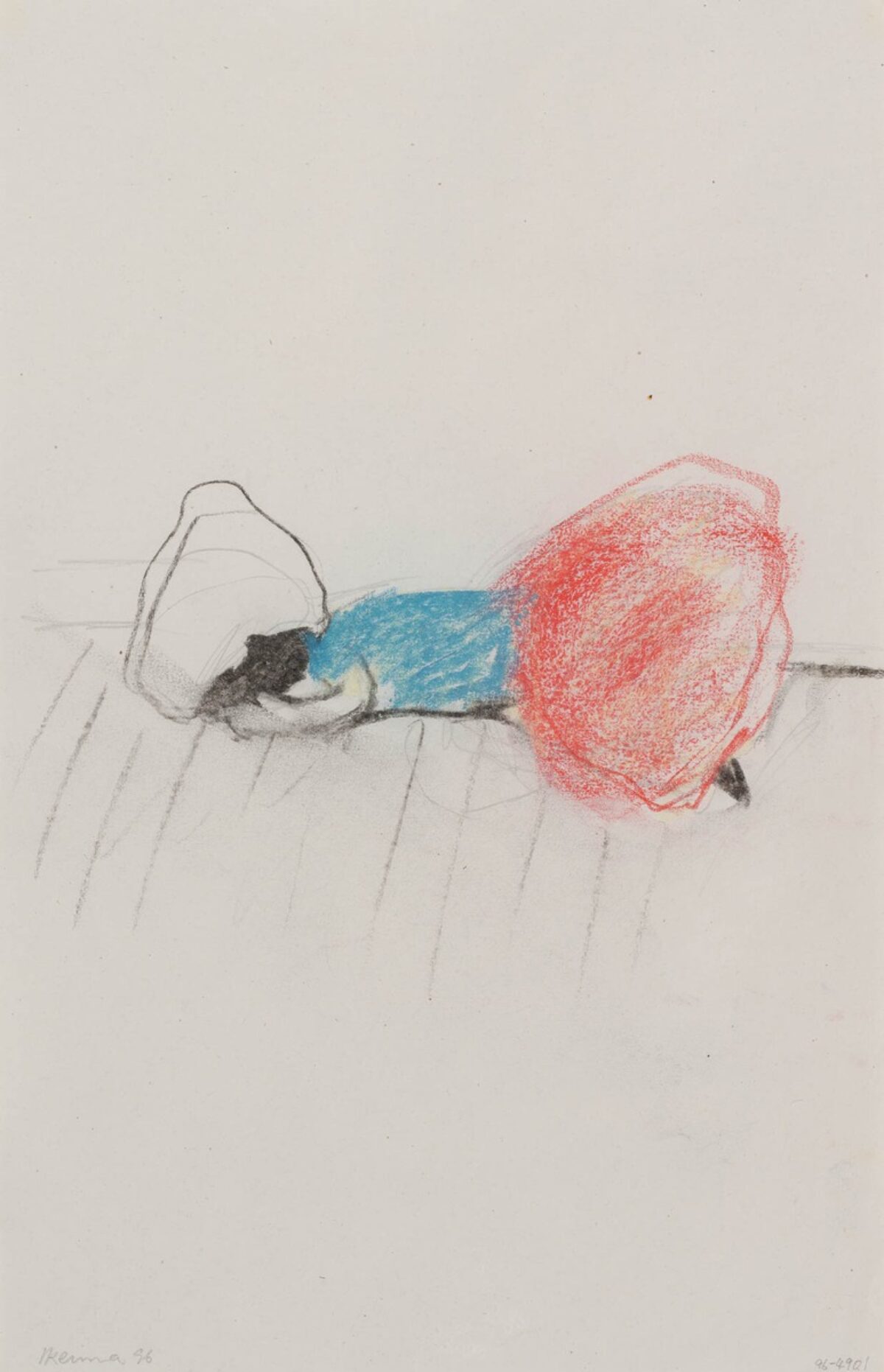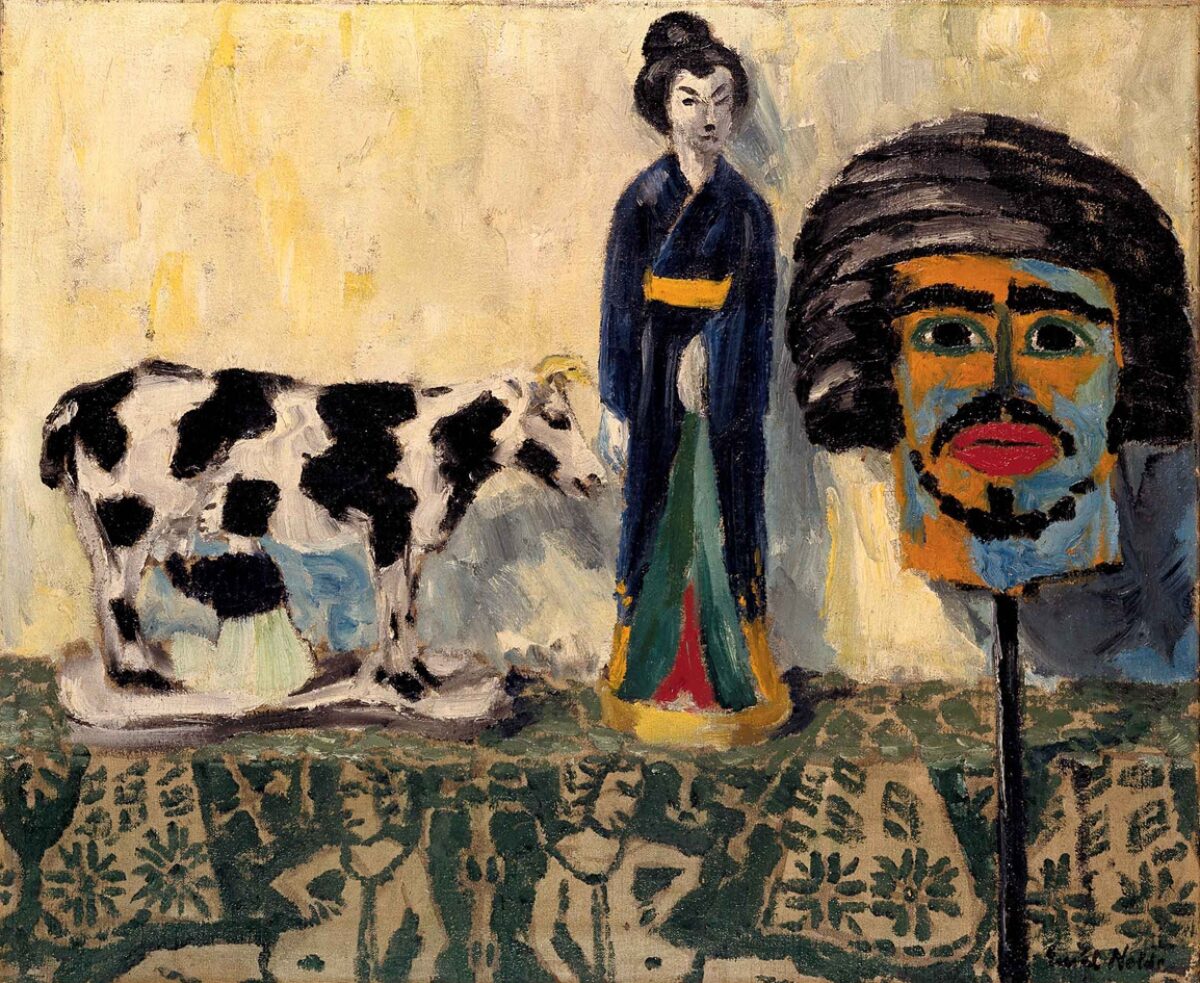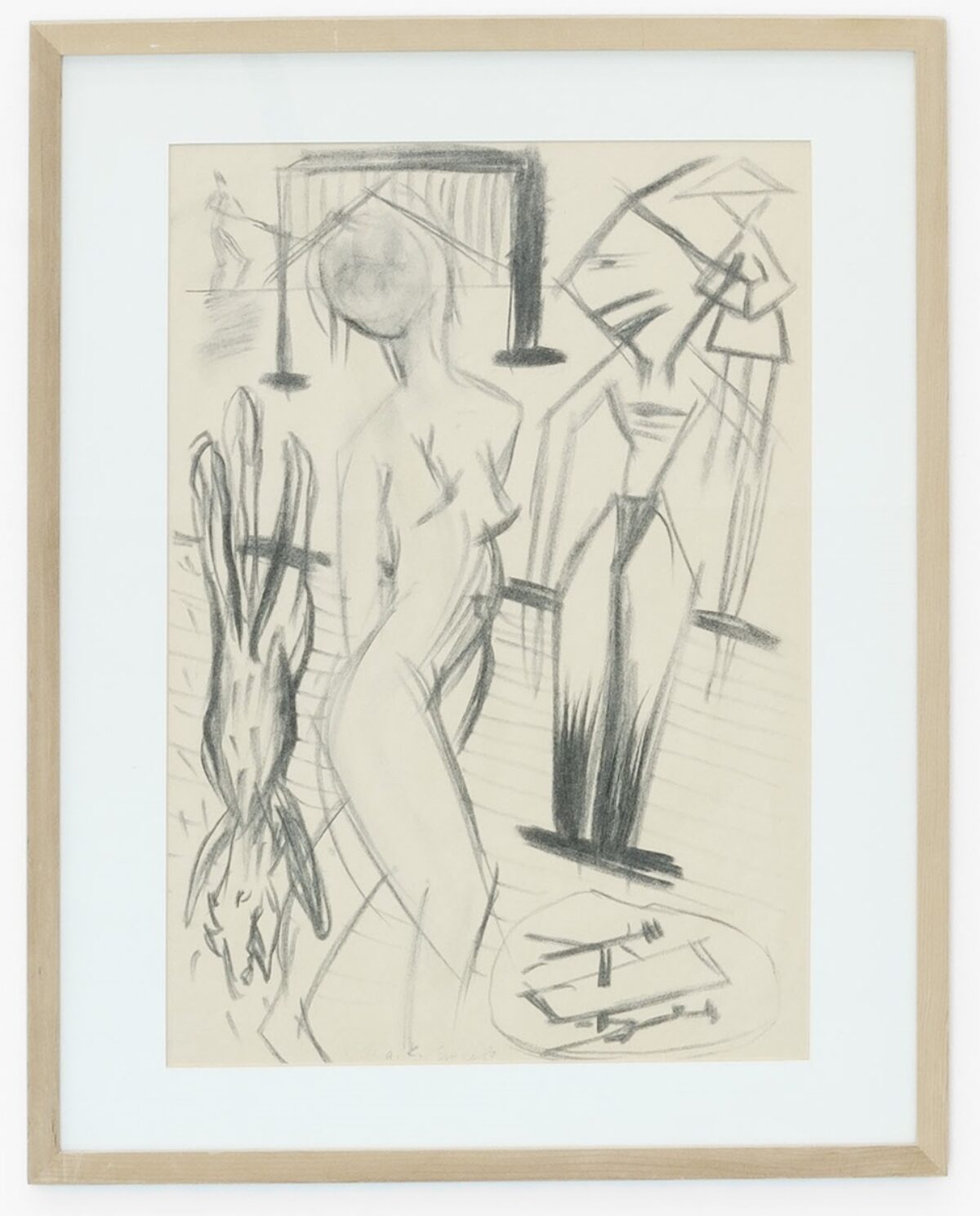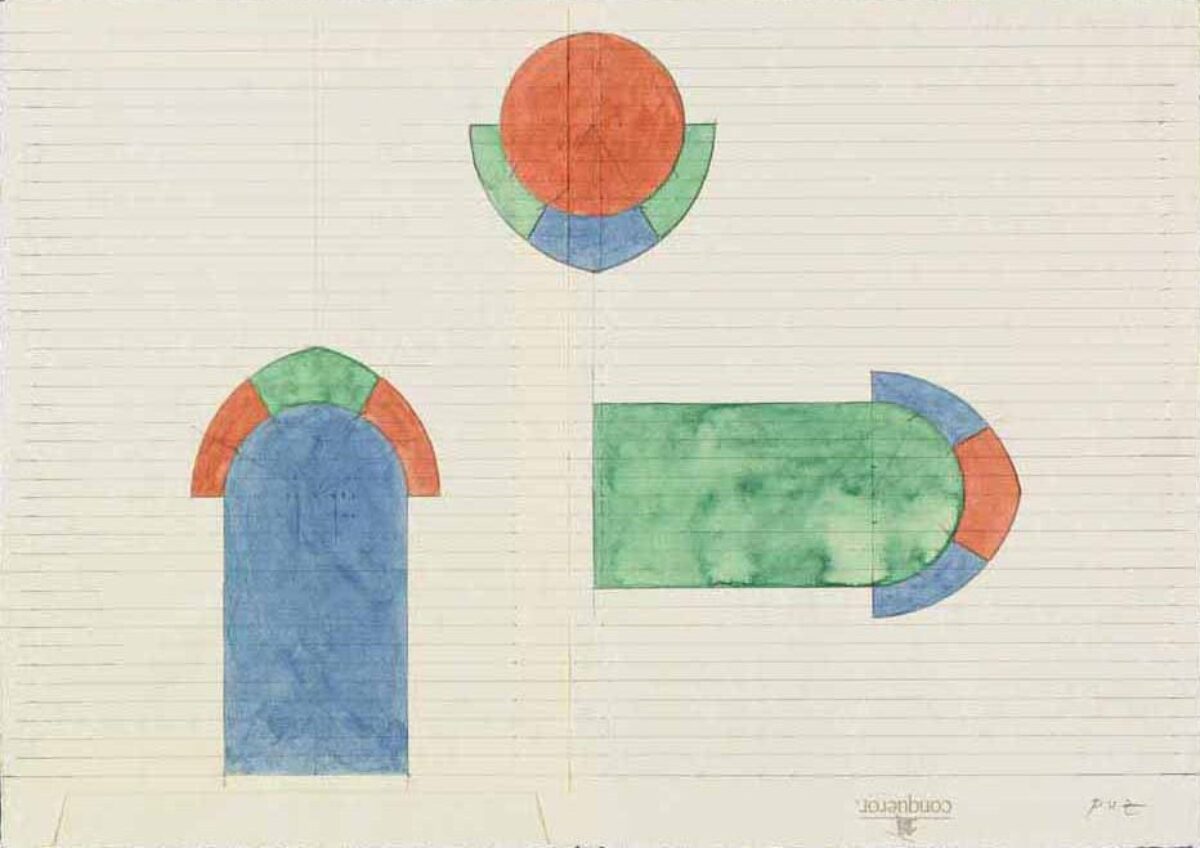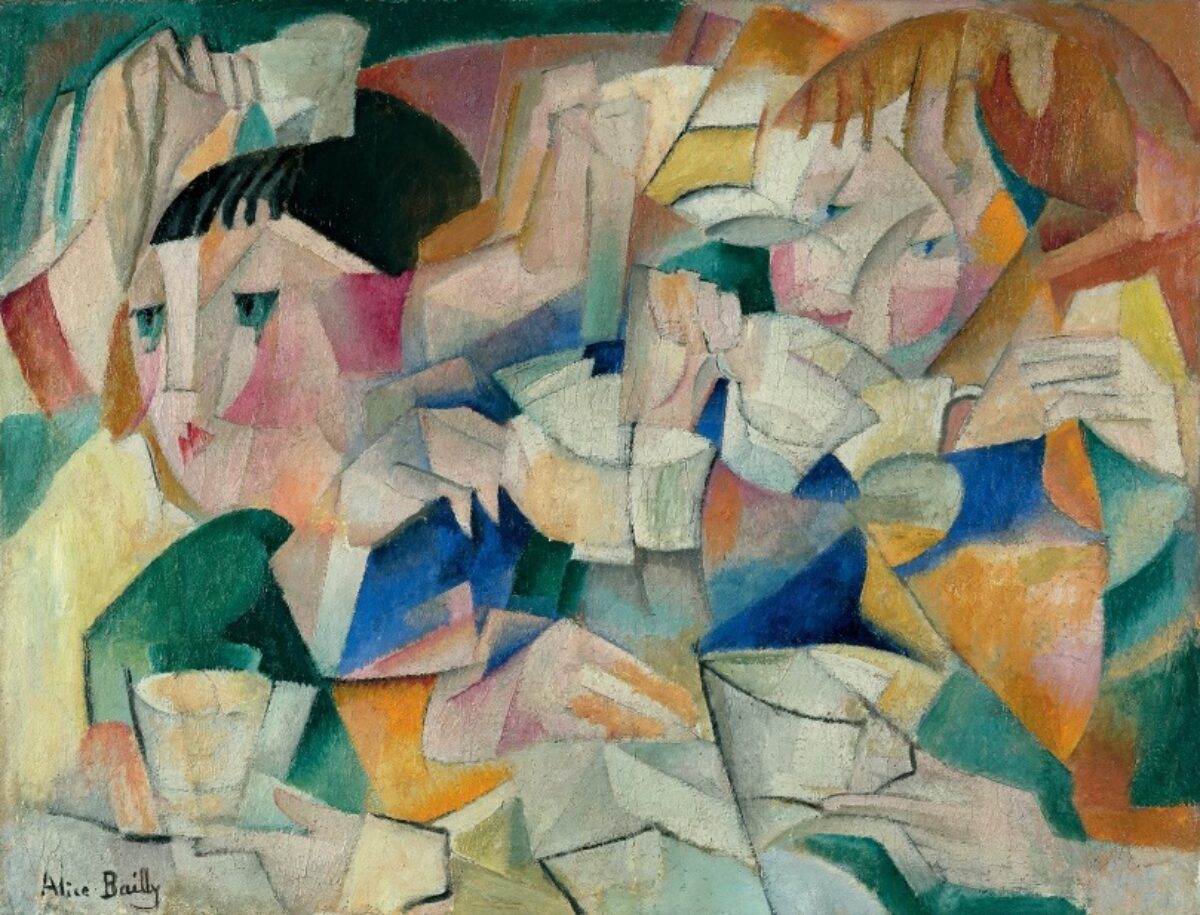
Öl auf Leinwand, 49 x 65 cm
English, french and italian version below
Das kubo-futuristische Gemälde „Le thé“ von Alice Bailly (1872–1938) konnte 1986 im Anschluss an die Ausstellung „Alice Bailly. Werke 1908–1923“ – eine Wanderausstellung, die vor der Station im Aargauer Kunsthaus in Wien und Innsbruck präsentiert wurde – angekauft werden. Es gehört bis heute zu den wichtigsten Bildern aus dieser Kunstperiode in der Sammlung des Aargauer Kunsthauses. Baillys Stellung als wichtige Figur innerhalb der schweizerischen klassischen Moderne hat sich im Zuge der Aufarbeitung der Schweizer Kunstgeschichte bestätigt und ihr Beitrag zur internationalen, von Frauen geschaffenen Kunst ist anerkannt.
Von 1891 bis 1895 besucht Bailly die Ecole des Beaux-Arts in Genf – damals eine der drei grössten Städte der Schweiz und aus künstlerischer Sicht die attraktivste sowie dynamischste. Erste Schritte als Künstlerin sind geprägt von der Disziplin, die ihr während der Ausbildung vermittelt wurde. Nach Aufenthalten in München und ersten Beteiligungen an nationalen Ausstellungen zieht Bailly nach Paris, wo sie von 1906 bis 1914 mit Unterbrüchen lebt. Nach der Entdeckung des Fauvismus am Salon d’Automne gelingt ihr in einer fauvistischen Anfangsphase die Befreiung der Farbe. Bailly gehört neben Fritz Baumann (1886–1942) und Otto Morach (1887–1973) zu den jungen Schweizer Künstlerinnen und Künstlern um 1910/11, die das übermächtige Vorbild Ferdinand Hodlers (1853–1918) zu überwinden versuchen, indem sie sich offen mit dem Kubismus auseinandersetzen. Bailly wendet sich der kubistischen Formensprache zu und kommt über die sekundären Kubisten um die Gruppe Section d’or – Kunstschaffende wie Albert Gleizes (1881–1953), Jean Metzinger (1883–1956), Fernand Léger (1881–1955), die sich im Umkreis von Robert Delaunays (1885–1941) lichtdurchfluteten farbigen Variante des Kubismus bewegen – in Kontakt mit dem Futurismus. Ihr gelingt es, durch freien Umgang mit beiden Kunstströmungen und ihrer gleichwertigen Berücksichtigung ihren eigenen künstlerischen Stils zu entwickeln.
Vom futuristischen Moment der Bewegung und vom sinnlichen Orphismus – ein Begriff geprägt durch den Dichter Guillaume Apollinaire für Delaunays farbintensive Werke – zeugt Baillys Werk „Le thé“. Das Werk zeigt ihr Bemühen, auch einfache, alltäglich beobachtete Bewegungsabläufe in einen grösseren Zusammenhang zu stellen und als reine Flächengestaltung zu präsentieren. Erkennbar sind eine schwarz- und eine braunhaarige Figur. Neben den leuchtenden Farben Gelb, Blau, Rot, Grün herrscht das Weiss der Hände und Tassen vor, die zur Darstellung der Bewegung beim Teetrinken wiederholt gemalt werden und somit Ausgangspunkt der Bildkomposition bilden. Von diesem Werk existieren zwei Fassungen, und Bailly stellt es 1914 zusammen mit „Joie autour de l’arbre und Patinage au Bois de Boulogne“ im Salon des Indépendants in Paris aus. Die zeitgenössische Kritik, u.a. Guillaume Apollinaire, findet lobende Worte für Baillys Gemälde: „Mlle Bailly exprime, dans une technique moderne, beaucoup de fraîcheur de sentiment.“ Bailly hat somit kurz vor Kriegsausbruch ihren künstlerischen Höhepunkt erreicht und zählt zur kosmopolitischen Avantgarde in Paris. Der Beginn des Ersten Weltkrieges zwingt die Künstlerin zur Rückreise nach Genf. In der Schweiz stösst ihr Schaffen auf kein Verständnis und es folgt eine finanziell wie moralisch schwere Zeit. Bailly knüpft Kontakt mit den Zürcher Dadaisten und beteiligt sich von 1918 bis 1920 an der von Baumann gegründeten Künstlervereinigung „Das Neue Leben“.
Karoliina Elmer
***
o In 1986 the Aargauer Kunsthaus is able to acquire the Cubo-Futurist painting “Tea” by Alice Bailly (1872–1938) following its iteration of “Alice Bailly. Works 1908–1923”, a multi-venue exhibition which had been shown in Vienna and Innsbruck before making its way to Aarau. Today, it is one of the most important paintings from this period in the collection of the Aargauer Kunsthaus. A critical reconsideration of Swiss art history has only confirmed Bailly’s status as a major figure of classical modernism in Switzerland, and her contribution to international women’s art has been recognised.
From 1891 to 1895 Bailly attends the École des Beaux-Arts in Geneva – at the time one of the three largest cities in Switzerland, and the most attractive and dynamic one from an artistic point of view. Her first steps as an artist are informed by the discipline she has been taught during her training. After a sojourn in Munich and first participations in national exhibitions, Bailly moves to Paris where she will live – with interruptions – from 1906 to 1914. After discovering Fauvism at the Salon d’Automne, she manages to liberate colour in an initial Fauvist phase. Along with Fritz Baumann (1886–1942) and Otto Morach (1887–1973), Bailly is one of the young Swiss artists around 1910–11 who seek to overcome the overpowering example of Ferdinand Hodler (1853–1918) by openly exploring Cubism. Bailly moves towards the Cubist formal language and comes into contact with Futurism via the secondary Cubists associated with the Section d’or – artists like Albert Gleizes (1881–1953), Jean Metzinger (1883–1956) and Fernand Léger (1881–1955) who worked within the orbit of Robert Delaunay’s (1885–1941) light-suffused, colourful version of Cubism. Her loose approach towards – and equal consideration of – both art movements allows her to develop her own, distinct artistic style.
The Futuristic element of movement and sensual Orphism – a term the poet Guillaume Apollinaire coined for Delaunay’s vibrantly colourful works – are reflected in Bailly’s painting “Tea”. It shows her efforts to place even ordinary, routinely observed motion sequences in a larger context and present them as purely planar composition. Two figures can be discerned, one black- and the other brown-haired. Aside from the bright yellows, blues, reds and greens, there is the dominant white of the hands and cups which are painted repeatedly to depict the movement of drinking tea, making them the starting point of the composition. Two versions exist of this work and in 1914 Bailly shows it along with “Joy around the Tree” and “Skating in the Bois de Boulogne” at the Salon des Indépendants in Paris. Contemporary critics, including Guillaume Apollinaire, have words of praise for Bailly’s painting: “Mlle Bailly expresses much freshness of sentiment in a modern technique.” Bailly thus reaches her artistic peak shortly before the war breaks out and is part of the cosmopolitan avant-garde in Paris. The beginning of the First World War forces the artist to return to Geneva. In Switzerland her work is not understood, and a financially and emotionally difficult time follows. Bailly makes contacts with the Zurich Dadaists and from 1918 to 1920 she is involved in the artist association “Das Neue Leben” (The New Life) founded by Fritz Baumann.
Karoliina Elmer
***
Tableau cubo-futuriste, «Le thé» d’Alice Bailly (1872-1938) a pu être acheté en 1986 suite à l’exposition «Alice Bailly. Œuvres 1908-1923», une exposition itinérante présentée à Vienne et Innsbruck avant de s’arrêter à l’Aargauer Kunsthaus. Aujourd’hui encore, il fait partie des principales œuvres de cette période artistique dans les collections de l’Aargauer Kunsthaus. La position de Bailly comme figure importante au sein de l’art moderne classique suisse s’est vue confirmée dans le cadre des travaux sur l’histoire de l’art suisse, et sa contribution à l’art international émanant de femmes est reconnue.
De 1891 à 1895, Bailly suit les cours de l’Ecole des Beaux-Arts de Genève, à l’époque l’une des trois plus grandes villes de Suisse et la plus attractive et dynamique sur le plan de l’art. Ses premiers pas comme artiste sont empreints de la discipline qui lui a été inculquée durant ses études. Après des séjours à Munich et de premières participations à des expositions nationales, Bailly part pour Paris où elle vit de 1906 à 1914 avec des interruptions. Ayant découvert le fauvisme au Salon d’Automne, elle réussit la libération de la couleur au cours de ses débuts fauvistes. Avec Fritz Baumann (1886-1942) et Otto Morach (1887-1973), Bailly fait partie, vers 1910/11, des jeunes artistes suisses qui tentent de s’affranchir du modèle surpuissant qu’est Ferdinand Hodler (1853-1918), en s’engageant ouvertement dans la voie du cubisme. Bailly se tourne vers le langage cubiste des formes et entre en contact avec le futurisme par le biais des cubistes secondaires autour de la Section d’or – un groupe d’artistes, tels que Albert Gleizes (1881-1953), Jean Metzinger (1883-1956), Fernand Léger (1881-1955), qui gravite dans l’orbite de la variante du cubisme, colorée et baignée de lumière, de Robert Delaunay (1885-1941). Jouant librement des deux courants artistiques en les prenant en considération à valeur égale, elle parvient à développer son propre style artistique.
«Le thé» de Bailly témoigne du moment futuriste du mouvement et de l’orphisme sensuel, un terme créé par le poète Guillaume Apollinaire pour qualifier les œuvres aux couleurs vives de Delaunay. Le tableau montre son souci de placer même des séquences de mouvement simples, observées au quotidien, dans un contexte plus large et de les présenter comme une pure composition de la surface. On peut distinguer une silhouette aux cheveux noirs et une aux cheveux châtains. Outre les couleurs lumineuses que sont le jaune, le bleu, le rouge, le vert, c’est le blanc qui domine, celui des mains et des tasses peintes à plusieurs reprises pour signifier le mouvement lorsqu’on boit du thé, et constituant ainsi le point de départ de la composition du tableau. Il existe deux versions de ce tableau que Bailly expose en 1914 au Salon des Indépendants à Paris avec deux autres œuvres, «Joie autour de l’arbre» et «Patinage au Bois de Boulogne». Les critiques de l’époque, dont Guillaume Apollinaire, auront des mots élogieux pour les tableaux de Bailly: «Mlle Bailly exprime, dans une technique moderne, beaucoup de fraîcheur de sentiment.» A la veille de la guerre, Bailly a ainsi atteint son apogée artistique et fait partie de l’avant-garde cosmopolite de Paris. Le début de la Première Guerre mondiale oblige l’artiste à rentrer à Genève. En Suisse, son travail se heurte à l’incompréhension; il s’ensuit une période difficile tant sur le plan financier que moral. Bailly tisse des liens avec les dadaïstes zurichois et participe de 1918 à 1920 à «Das Neue Leben», l’association d’artistes fondée par Fritz Baumann.
Karoliina Elmer
***
Il dipinto di matrice cubo-futurista di Alice Bailly (1872-1938), intitolato “Il tè”, è stato acquistato dall’Aargauer Kunsthaus in occasione dell’esposizione itinerante “Alice Bailly. Werke 1908-1923”, presentata prima a Vienna e Innsbruck, poi ad Aarau. Nella collezione del museo l’opera rappresenta ancora oggi uno dei quadri più importanti dell’epoca. Il ruolo di Bailly quale esponente di rilievo del modernismo classico elvetico è stato confermato nel corso degli studi dedicati alla storia dell’arte svizzera e il suo contributo all’arte delle donne è riconosciuto a livello internazionale.
Dal 1891 al 1895 Bailly frequenta l’École des Beaux-Arts a Ginevra, all’epoca una delle tre maggiori città svizzere, nonché la più attrattiva e dinamica sul piano artistico. I primi passi dell’artista esordiente sono segnati dalla disciplina acquisita durante la formazione. Dopo i soggiorni a Monaco di Baviera e le prime partecipazioni a esposizioni nazionali, Bailly si trasferisce a Parigi, dove vive con interruzioni dal 1906 al 1914. La scoperta del Fauvismo al Salon d’Automne segna la prima fase di ricerca, di matrice fauvista, durante la quale giunge alla liberazione del colore. Insieme a Fritz Baumann (1888-1942) e Otto Morach (1887-1973), nel 1910-11 Bailly fa parte dei giovani artisti svizzeri che attraverso il confronto aperto con il cubismo tentano di superare il modello predominante di Ferdinand Hodler (1853-1918). Bailly si orienta verso il linguaggio formale cubista e attraverso gli esponenti secondari del Cubismo attivi nella cerchia della Section d’or – quali Albert Gleizes (1881-1953), Jean Metzinger (1883-1956) e Fernand Léger (1881-1955), vicini alla variante cubista basata sulla relazione tra colore e luce sviluppata da Robert Delaunay (1885-1941) – entra in contatto con il Futurismo. Grazie alla libera elaborazione di queste due correnti artistiche, assimilate in uguale misura, Bailly matura la propria posizione artistica.
La ricezione della componente dinamica del Futurismo da un lato e della sensibilità dell’Orfismo dall’altro – il termine è stato coniato dal poeta Guillaume Apollinaire per descrivere la vivacità cromatica di Delaunay – trova una conferma nell’opera “Il tè”. Il dipinto rende manifesta la volontà di inscrivere in un contesto più ampio una sequenza di movimenti, anche semplici, osservati nella quotidianità, presentandoli come mera organizzazione di superfici. Si riconoscono una figura dai capelli neri e un’altra dai capelli castani. Accanto ai colori luminosi giallo, blu, rosso e verde prevale il bianco delle mani e delle tazzine, che moltiplicate per rappresentare l’idea del movimento compiuto bevendo il tè costituiscono il nucleo germinale della composizione. Il quadro è stato formulato in due versioni distinte e nel 1914 Bailly lo espone al “Salon des Indépendants” insieme a “Joie autour de l’arbre” e “Patinage au Bois de Boulogne”. I critici dell’epoca – tra i quali Guillaume Apollinaire – dedicano parole d’elogio all’opera di Bailly: “Mlle Bailly esprime, in una tecnica moderna, una notevole freschezza di sentimento”. Alla vigilia della prima guerra mondiale, Bailly raggiunge così l’apogeo della sua fortuna artistica ed è annoverata tra gli esponenti dell’avanguardia parigina cosmopolita. Lo scoppio della guerra la costringe a tornare a Ginevra. In Svizzera le sue opere non incontrano il favore del pubblico, segnando l’inizio di un periodo difficile, tanto sul piano economico quanto su quello morale. Bailly stringe amicizia con i dadaisti zurighesi e dal 1918 al 1920 partecipa al sodalizio artistico “Das Neue Leben” fondato da Fritz Baumann.
Karoliina Elmer
